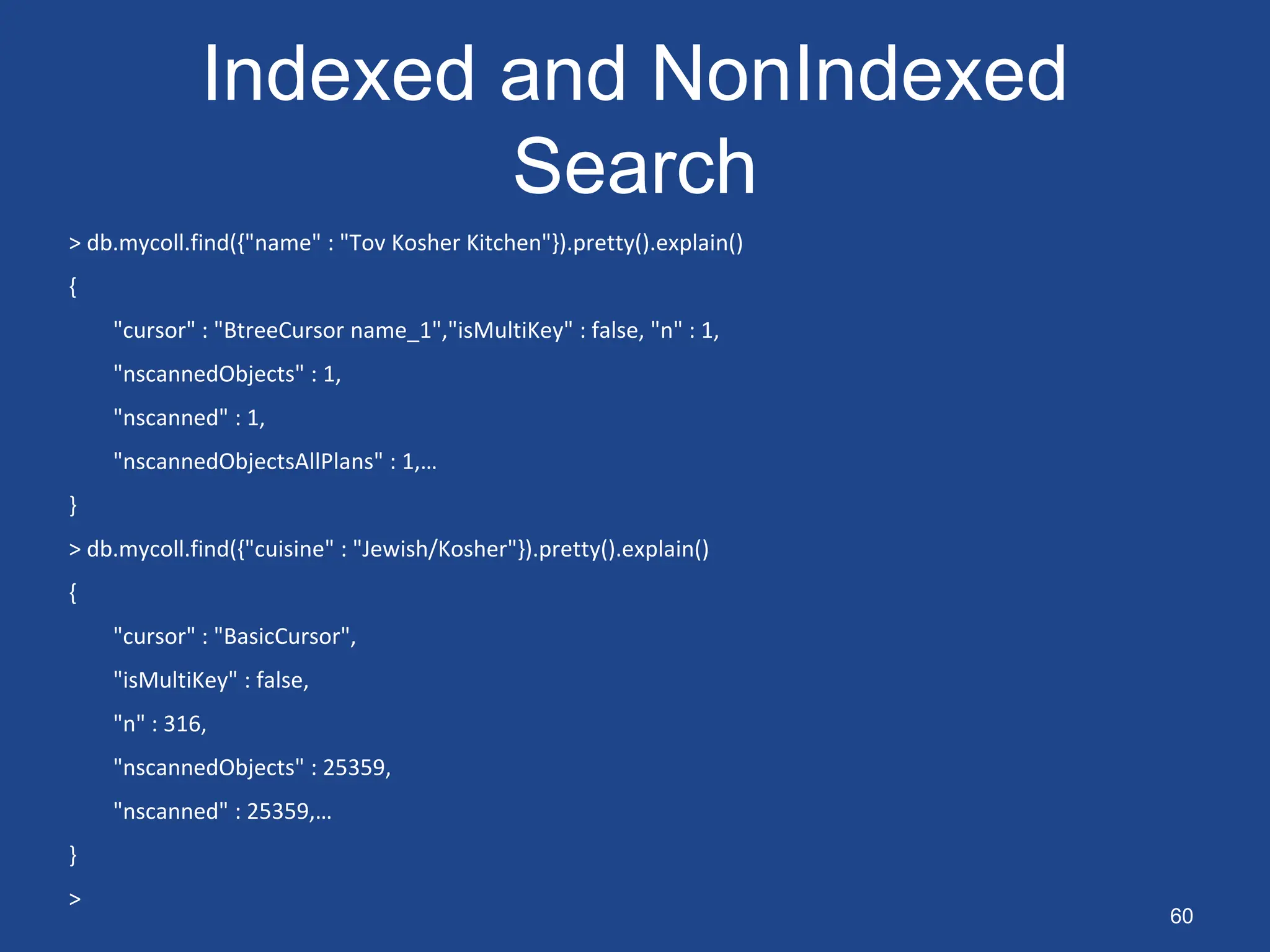This document provides a technical overview of MongoDB presented by Learnizo Global LLP. It begins with an introduction and agenda. It then discusses key aspects of MongoDB like its document-oriented data model, flexible schema, and horizontal scalability. It covers MongoDB's core functions like CRUD operations, indexing, aggregation, and deployment options like replica sets and sharding. It also introduces key MongoDB concepts like its support for dynamic schemas, embedded documents, and ACID versus BASE properties. Finally, it demonstrates sample queries and uses MongoDB to highlight its capabilities.


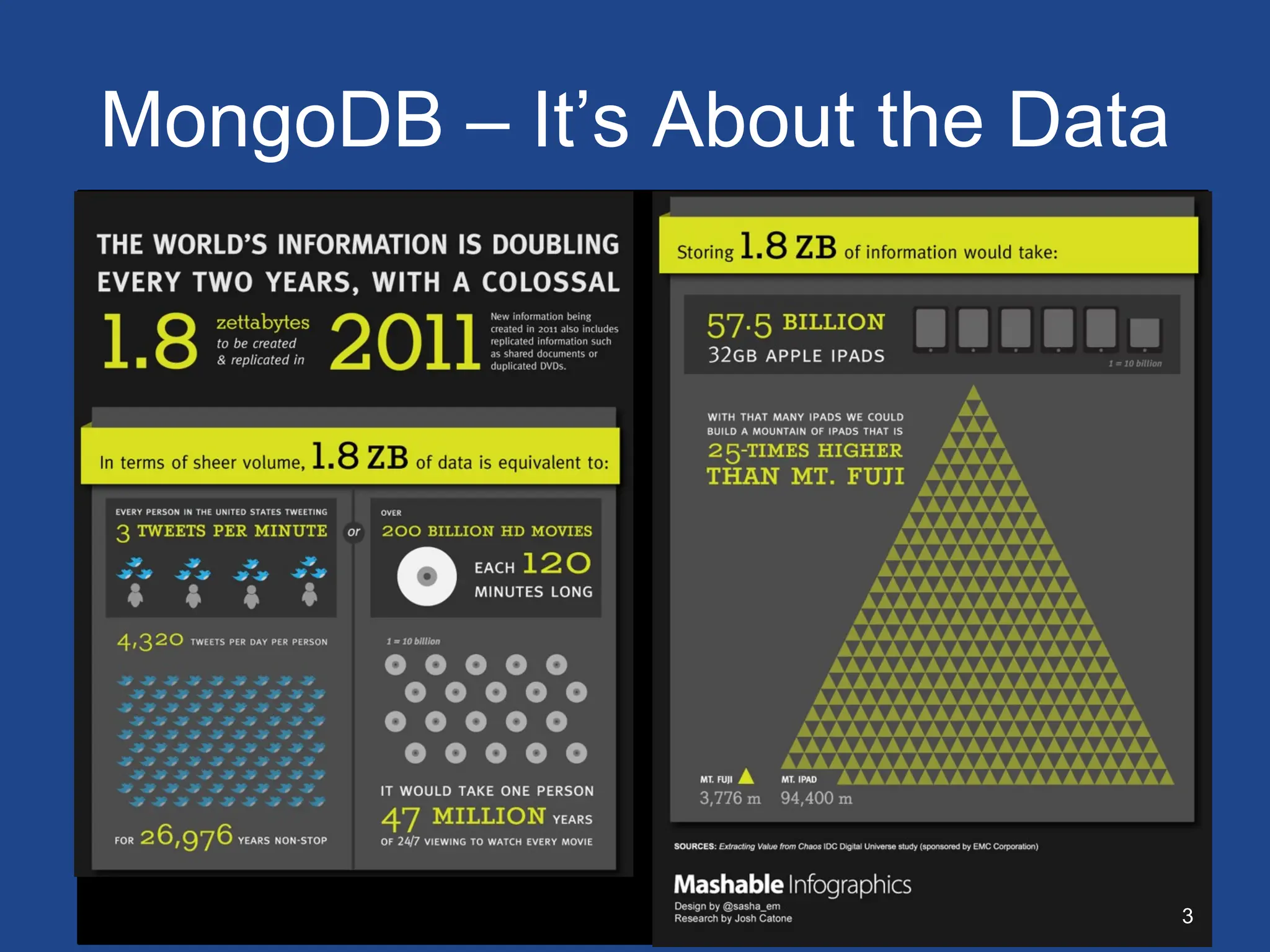
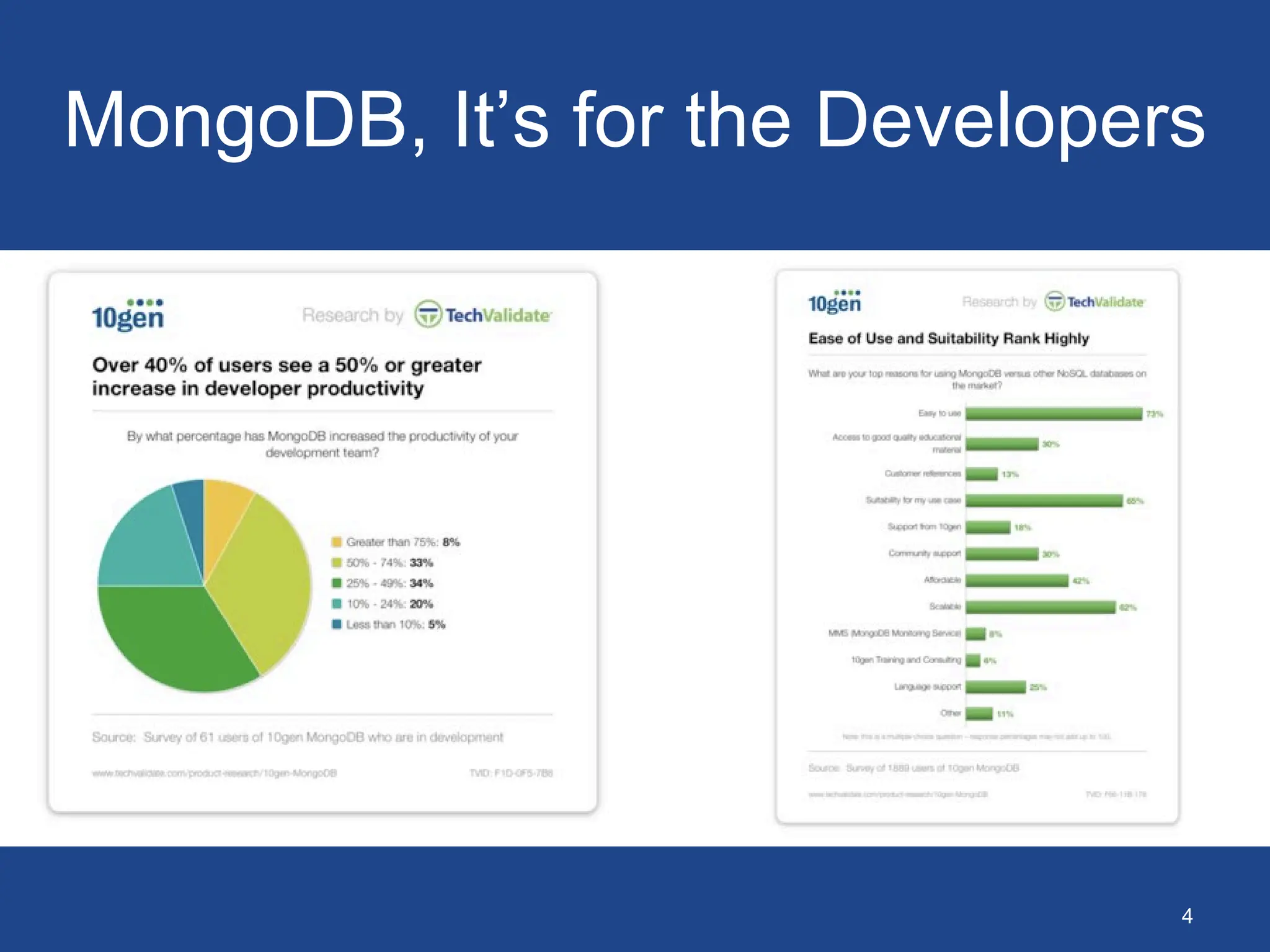
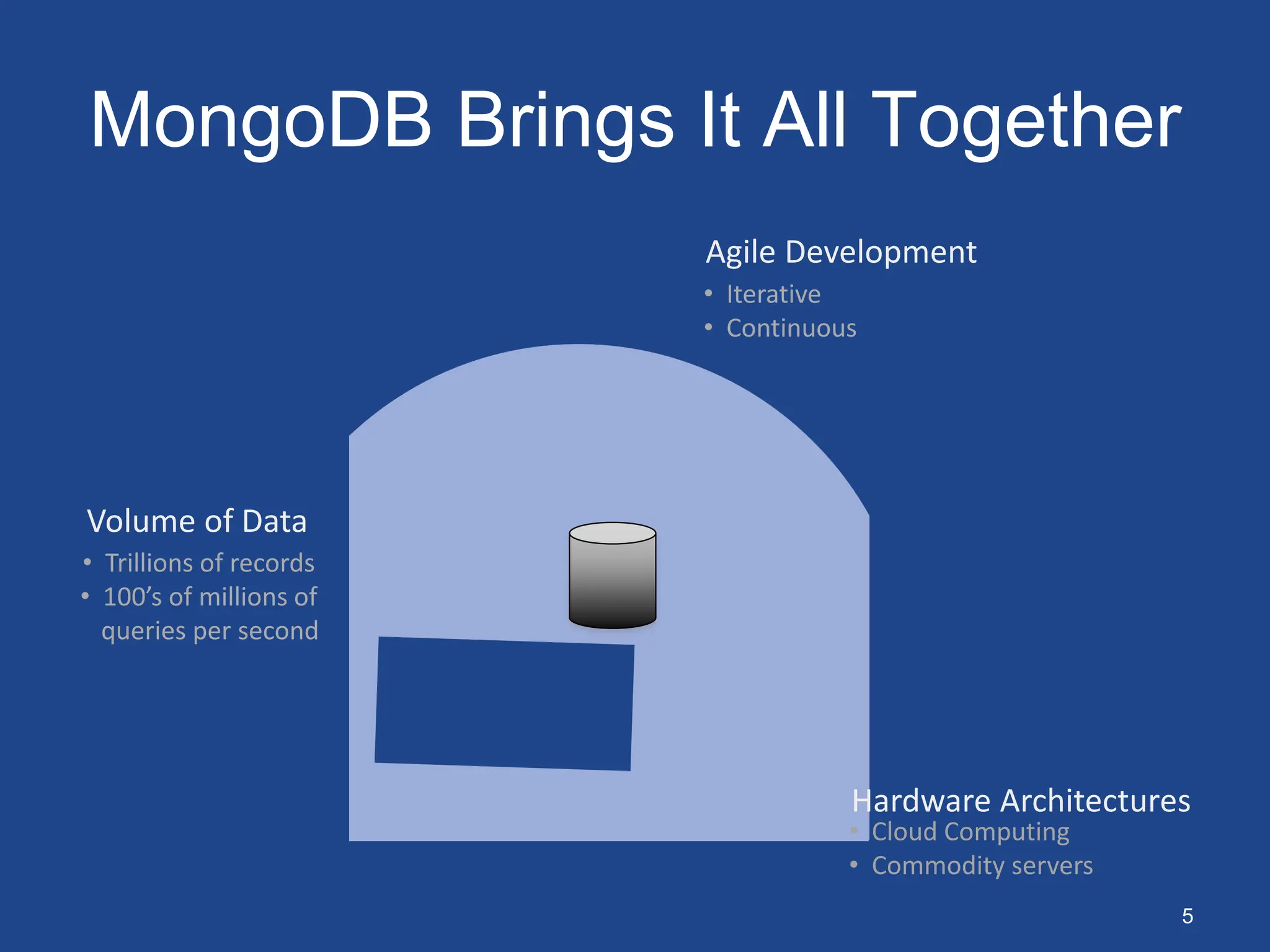
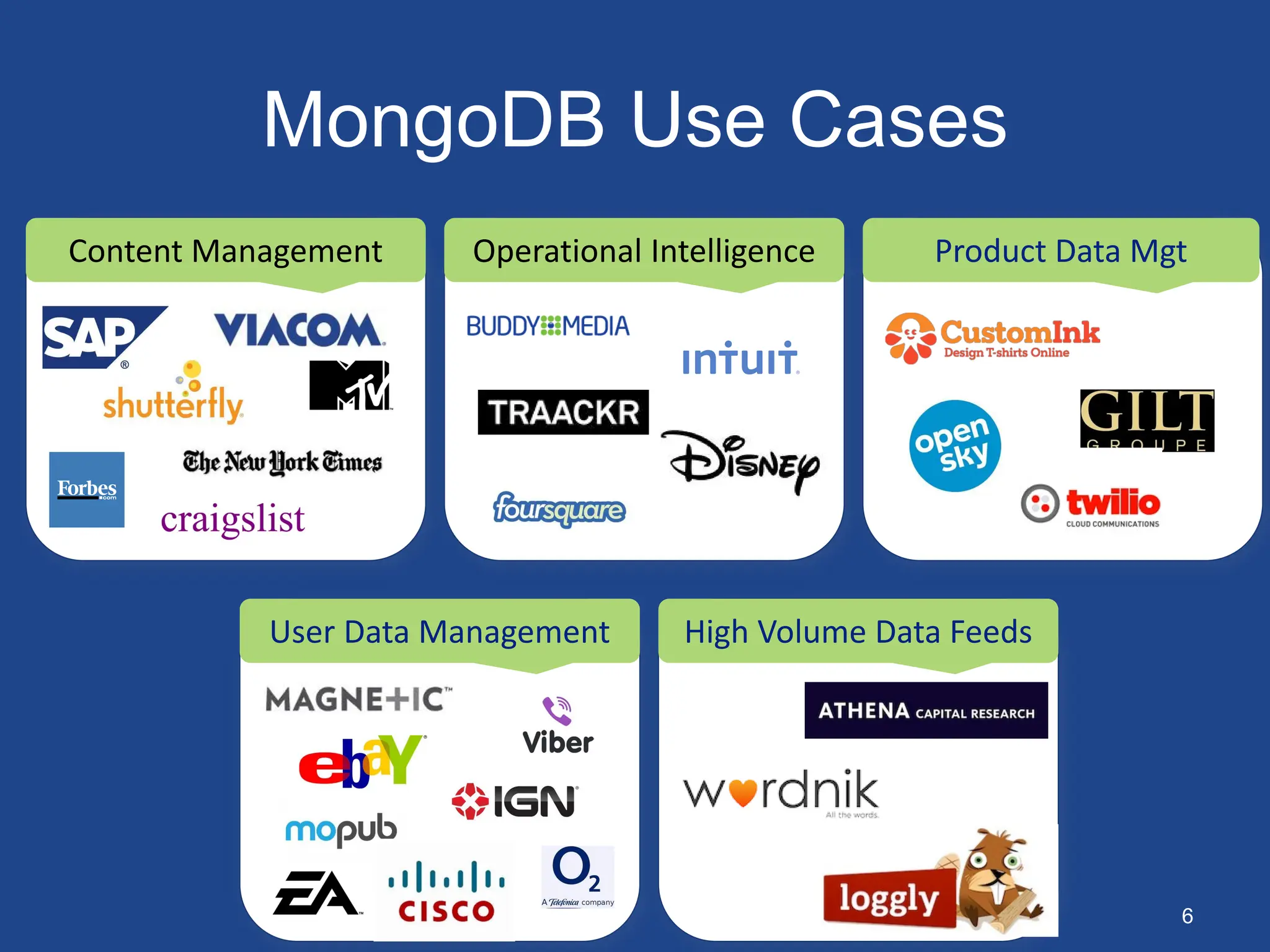
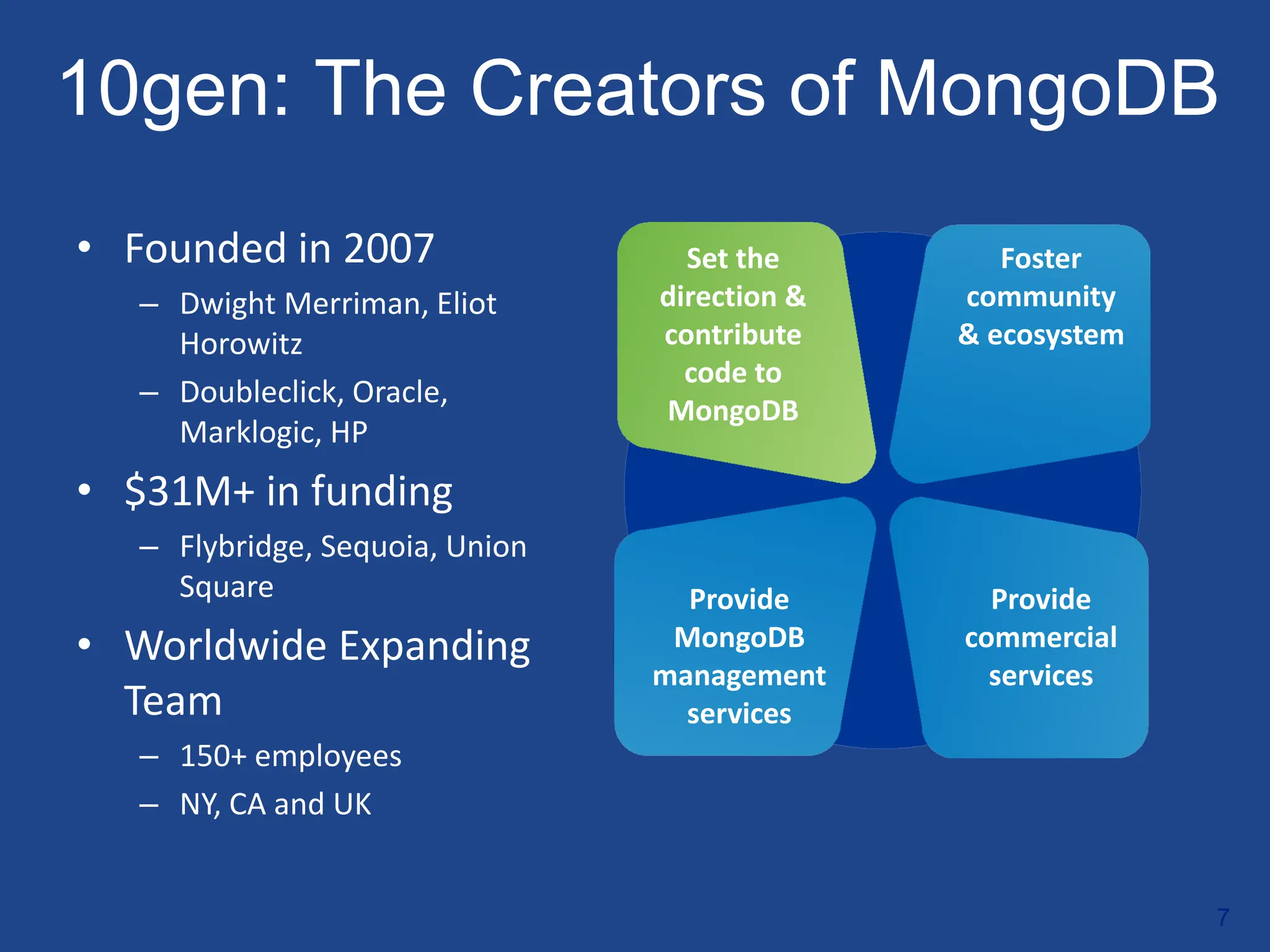

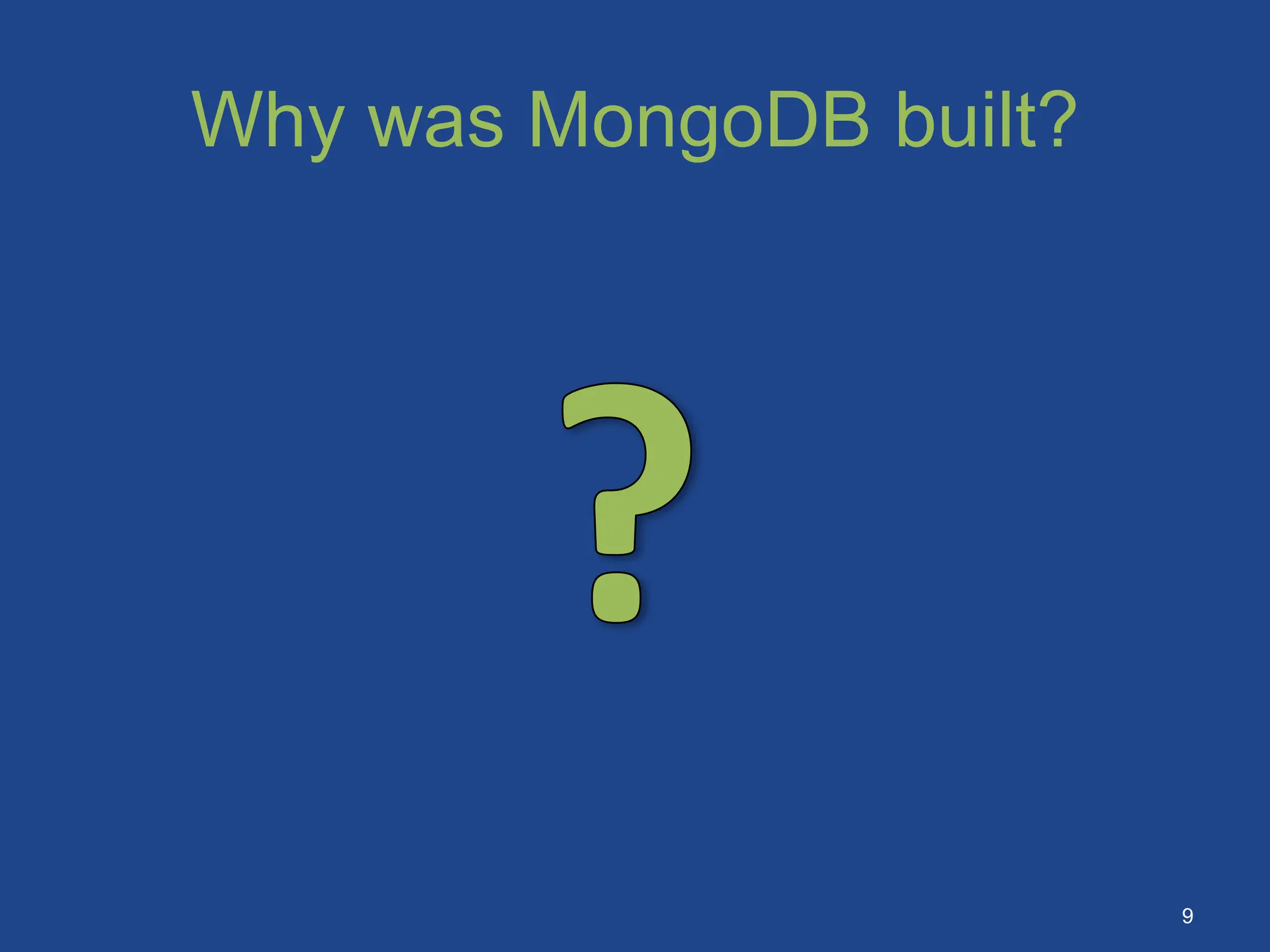
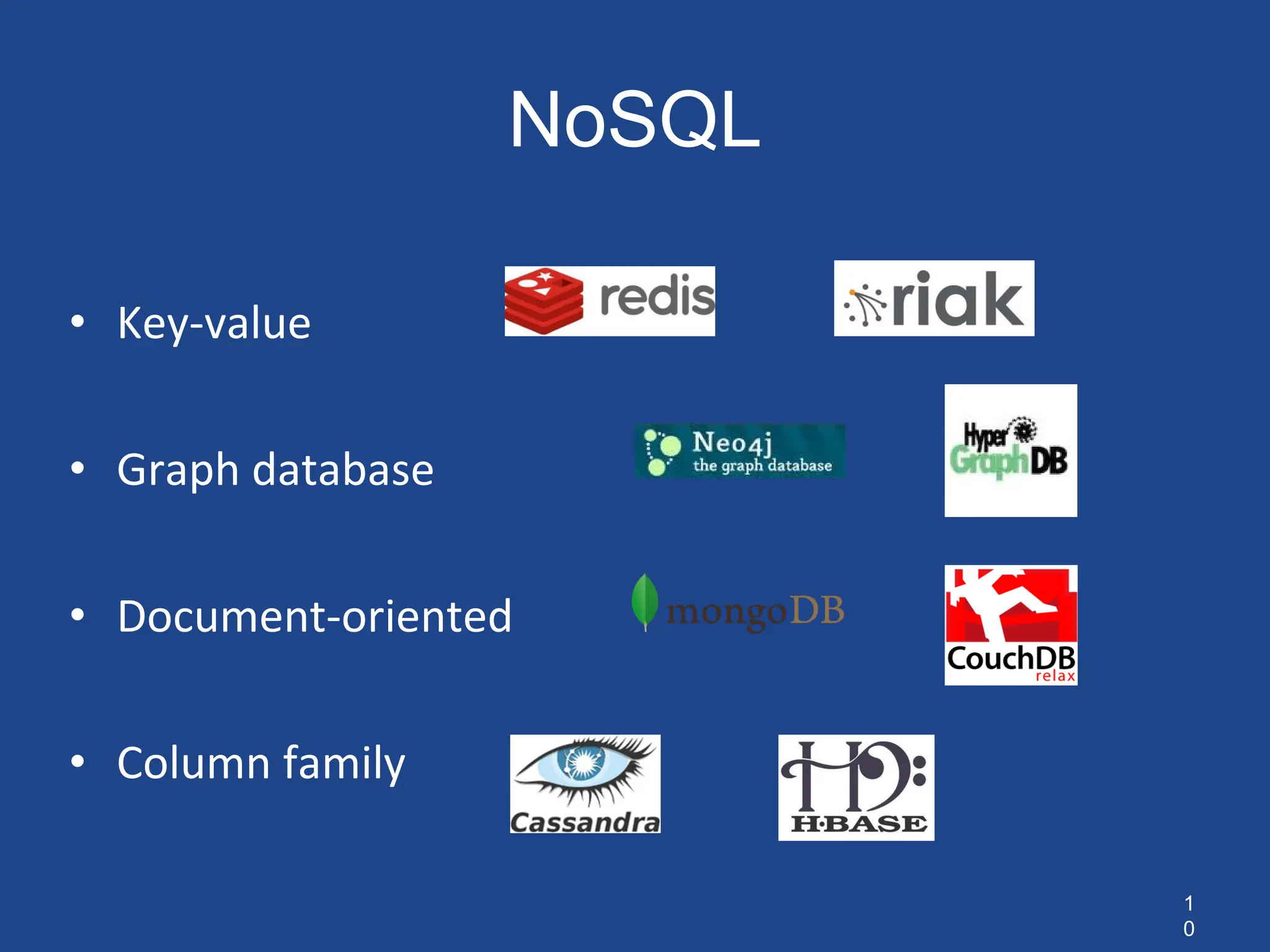
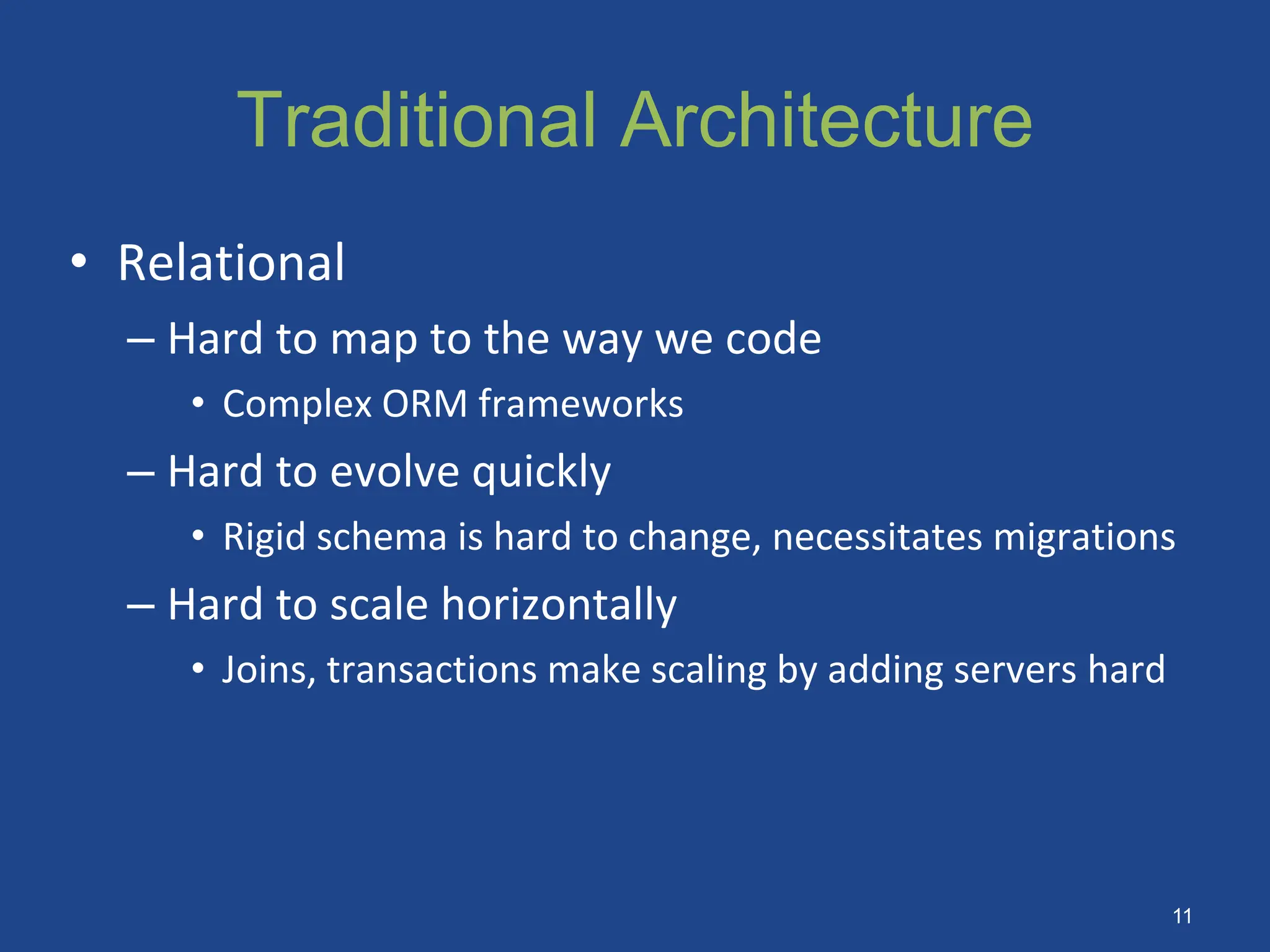
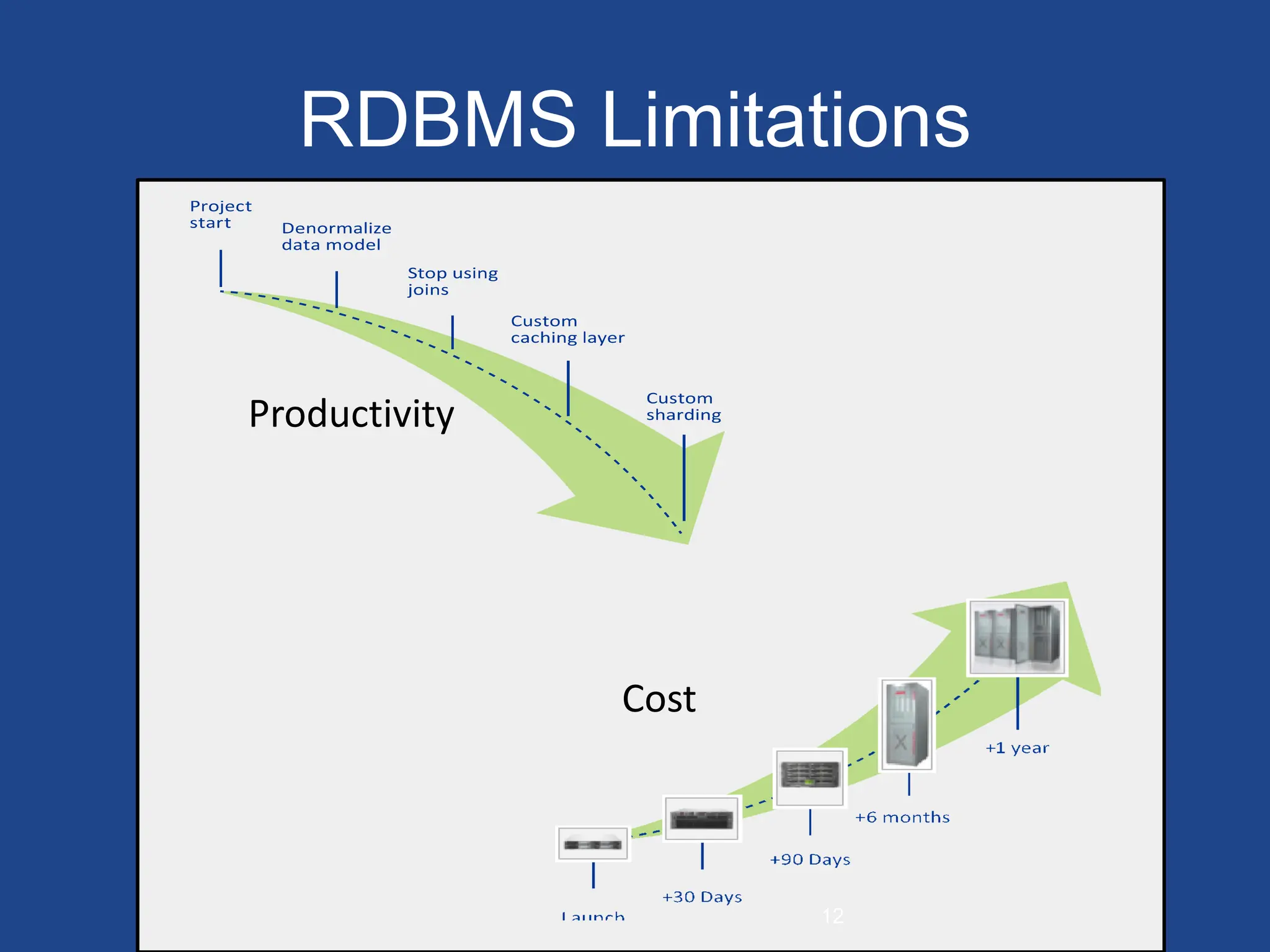
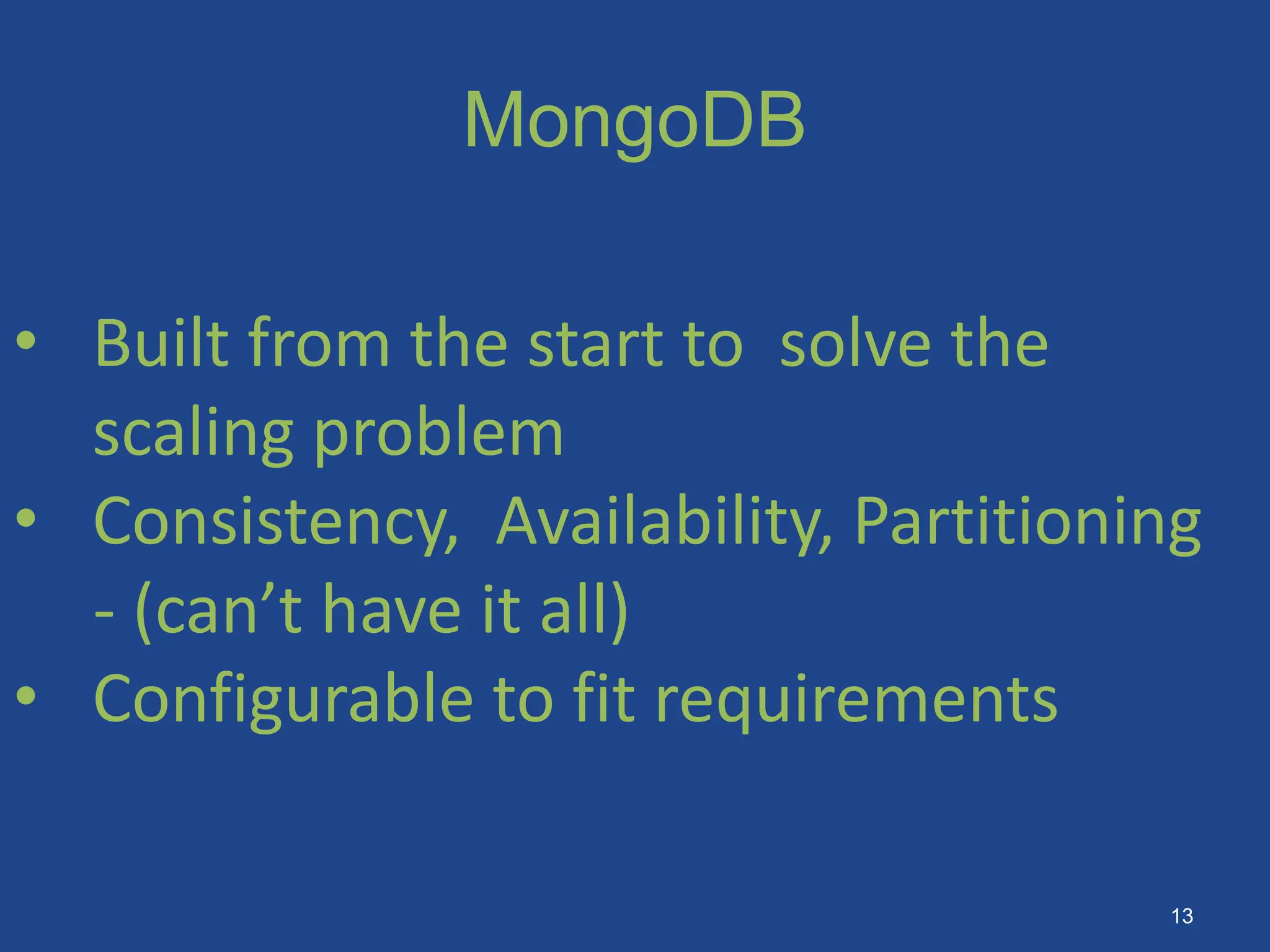
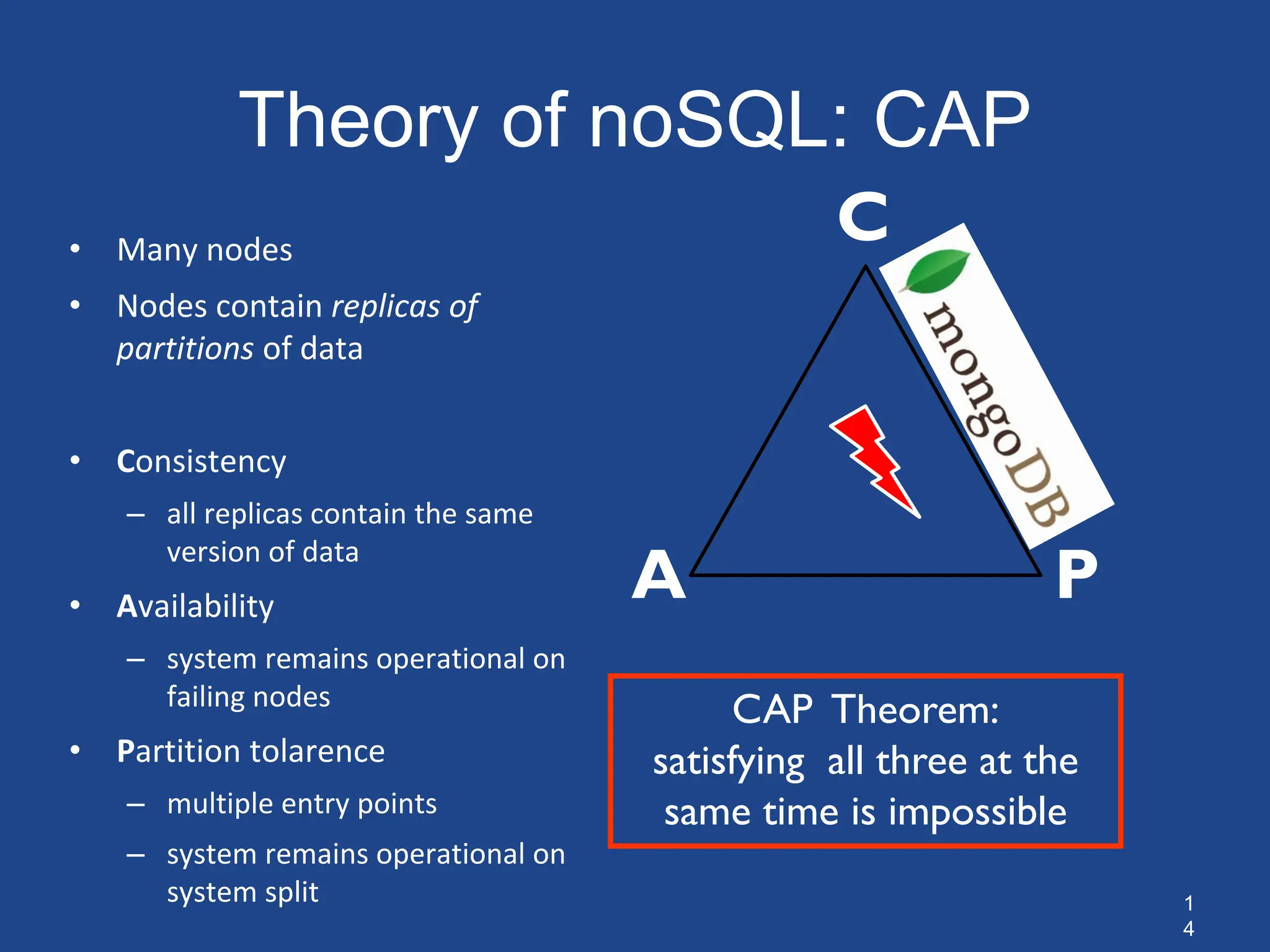
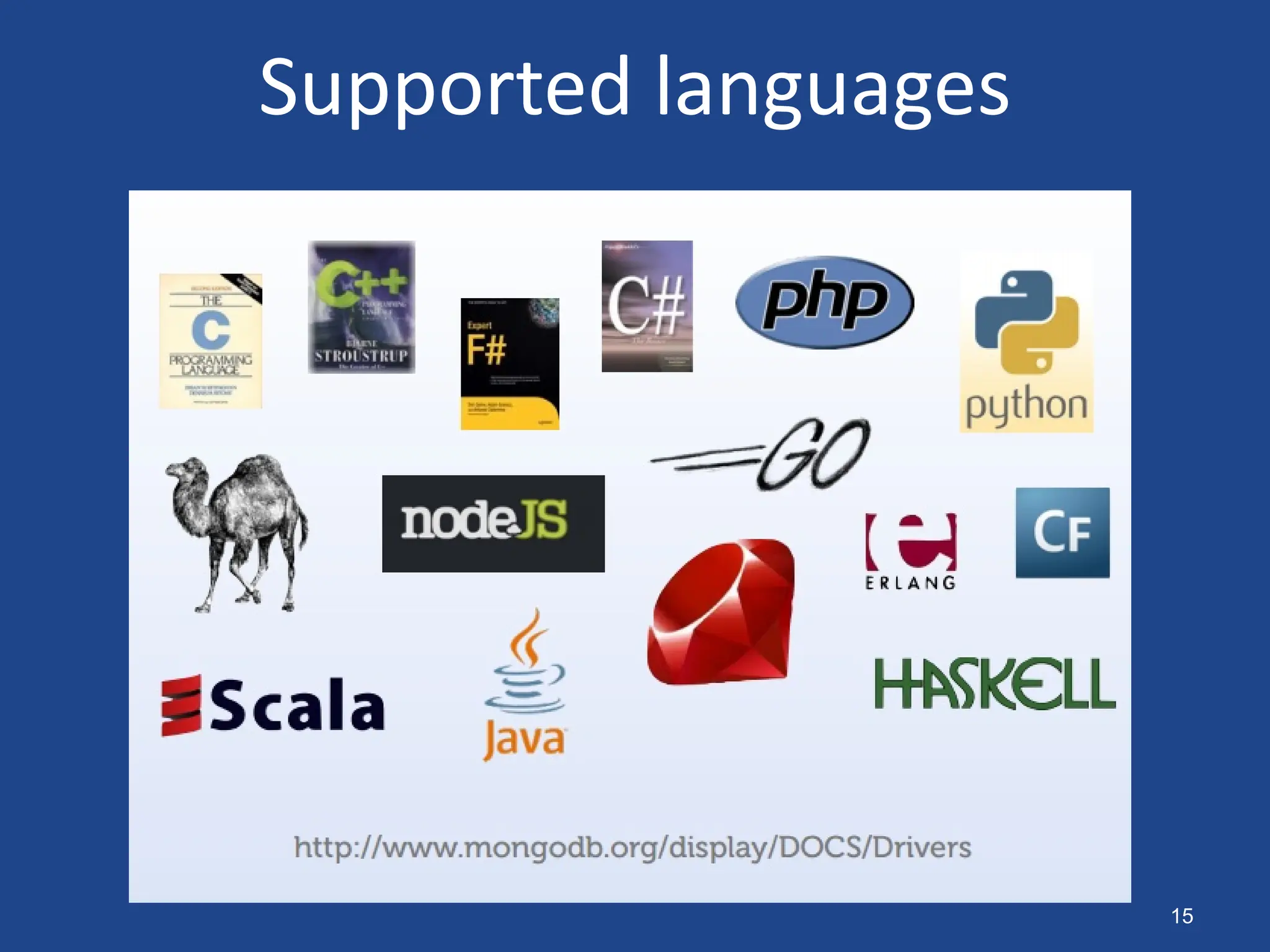
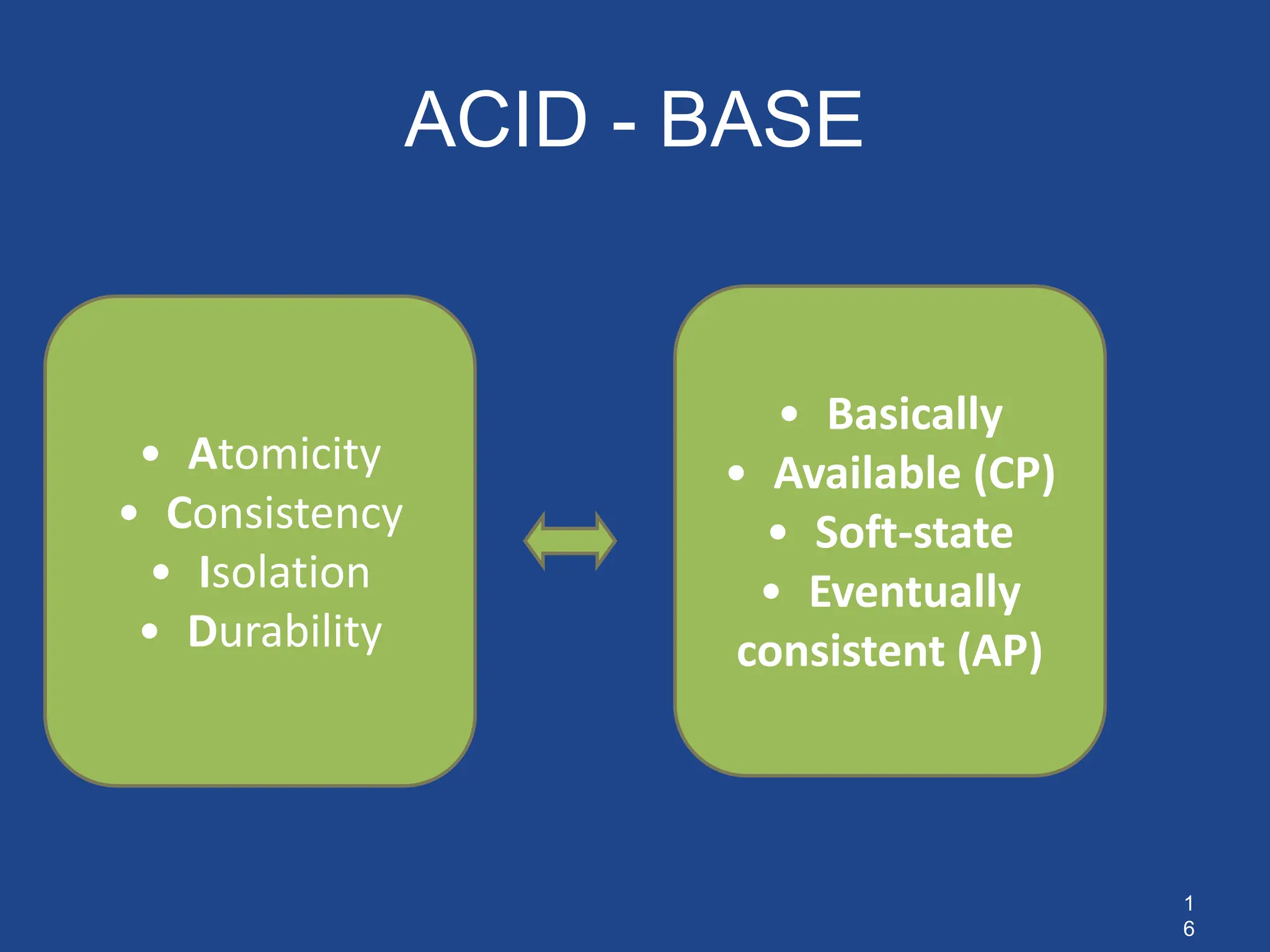
![MongoDB is easy to use
17
START TRANSACTION;
INSERT INTO contacts VALUES
(NULL, ‘joeblow’);
INSERT INTO contact_emails VALUES
( NULL, ”joe@blow.com”,
LAST_INSERT_ID() ),
( NULL, “joseph@blow.com”,
LAST_INSERT_ID() );
COMMIT;
db.contacts.save( {
userName: “joeblow”,
emailAddresses: [
“joe@blow.com”,
“joseph@blow.com” ] } );
MongoDB
MySQL](https://image.slidesharecdn.com/mongodb-231004154158-137f2d00/75/MongoDB-pdf-17-2048.jpg)
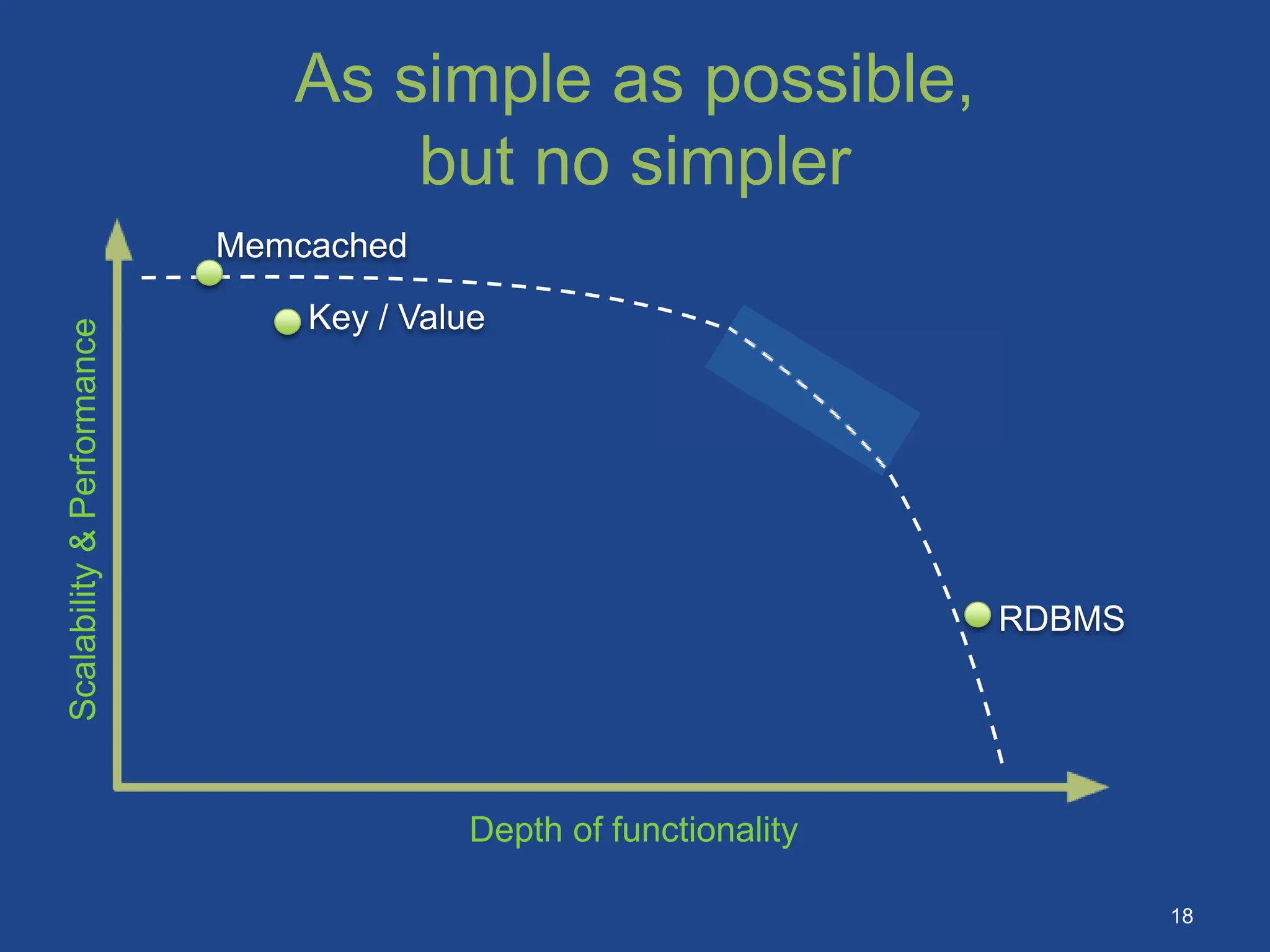

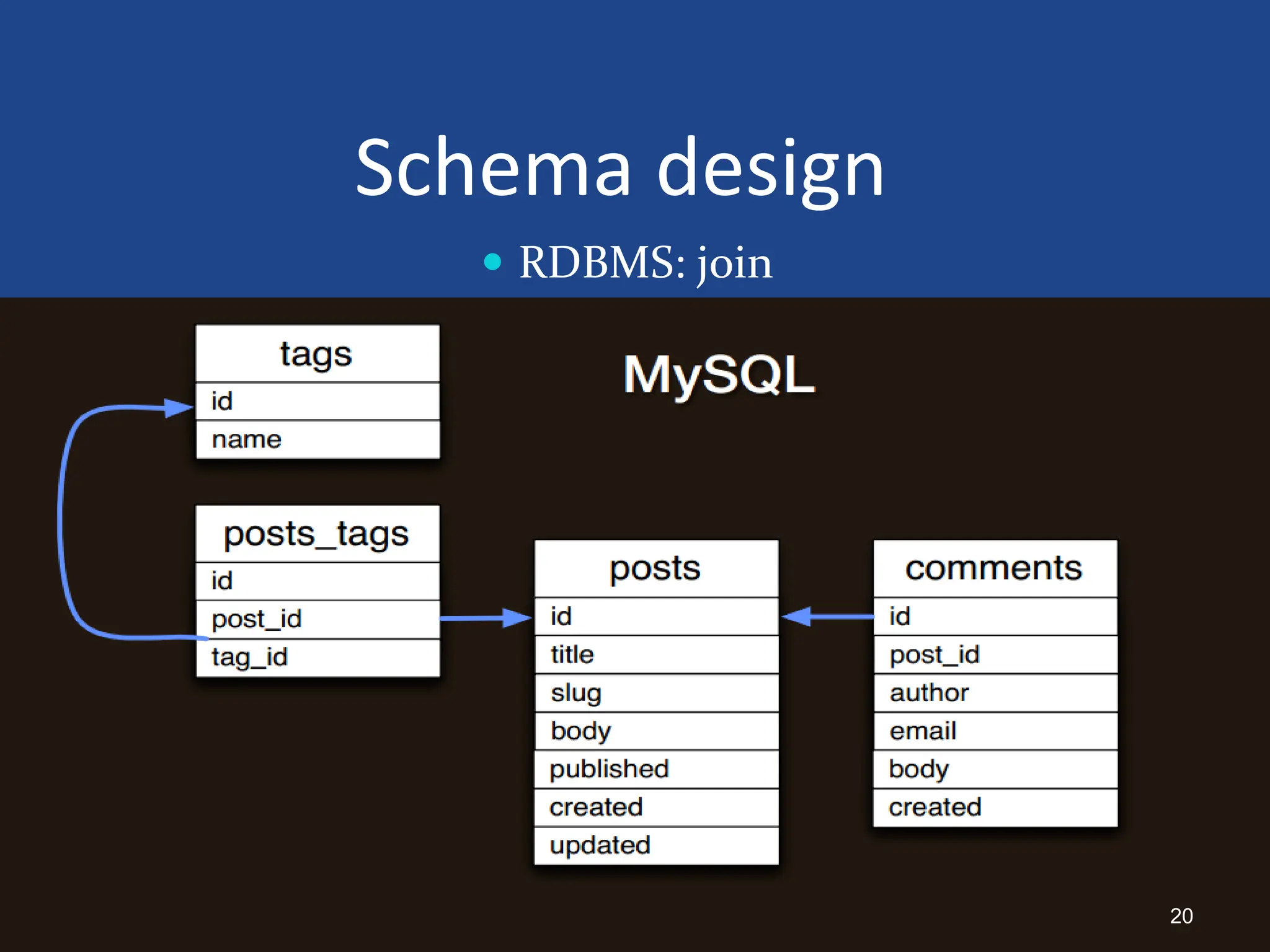

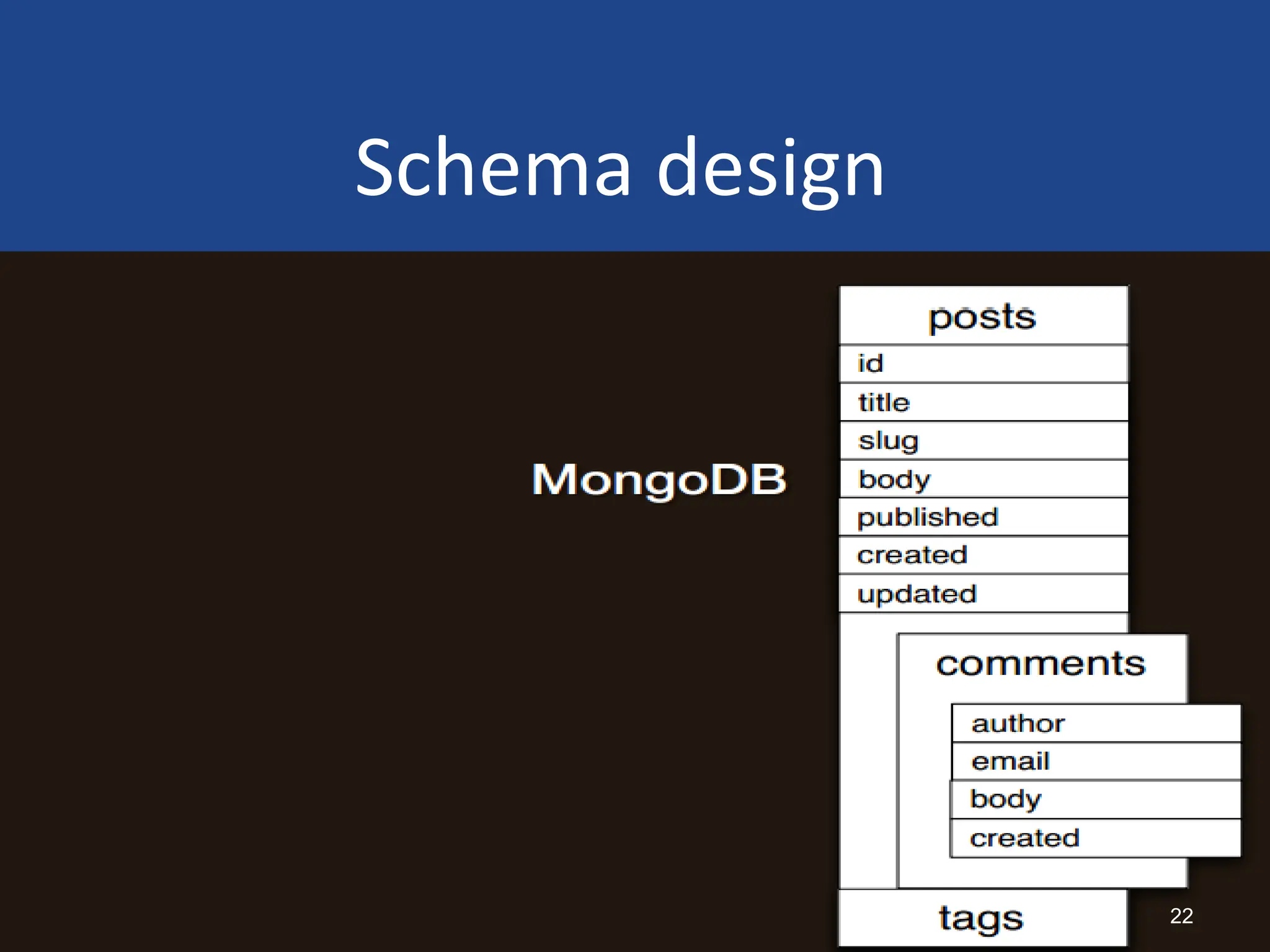
![Tables to Collections
of JSON Documents
{
title: ‘MongoDB’,
contributors:
[
{ name: ‘Eliot Horowitz’,
email: ‘eliot@10gen.com’ },
{ name: ‘Dwight Merriman’,
email: ‘dwight@10gen.com’ }
],
model:
{
relational: false,
awesome: true
}
}
23](https://image.slidesharecdn.com/mongodb-231004154158-137f2d00/75/MongoDB-pdf-23-2048.jpg)
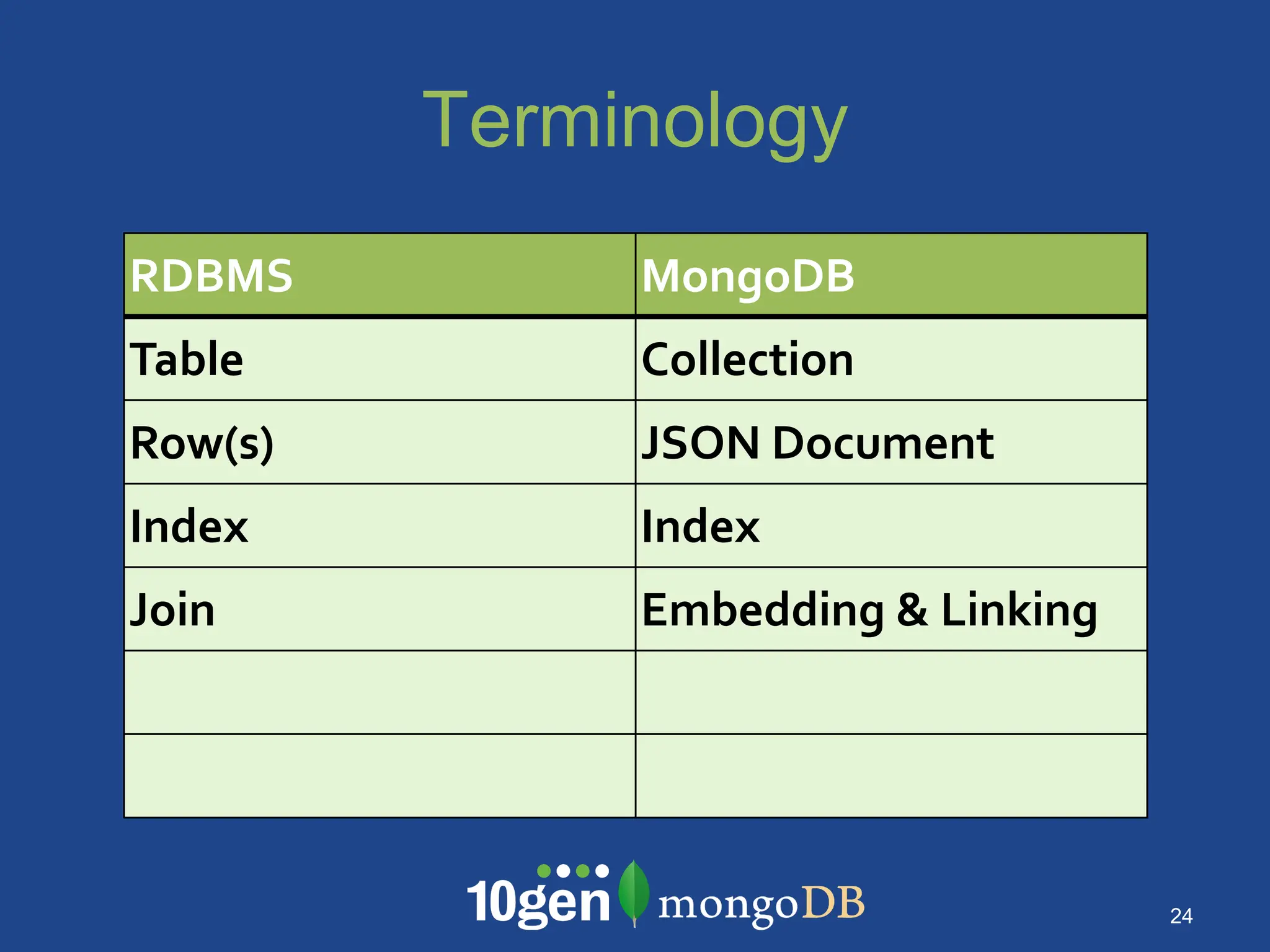
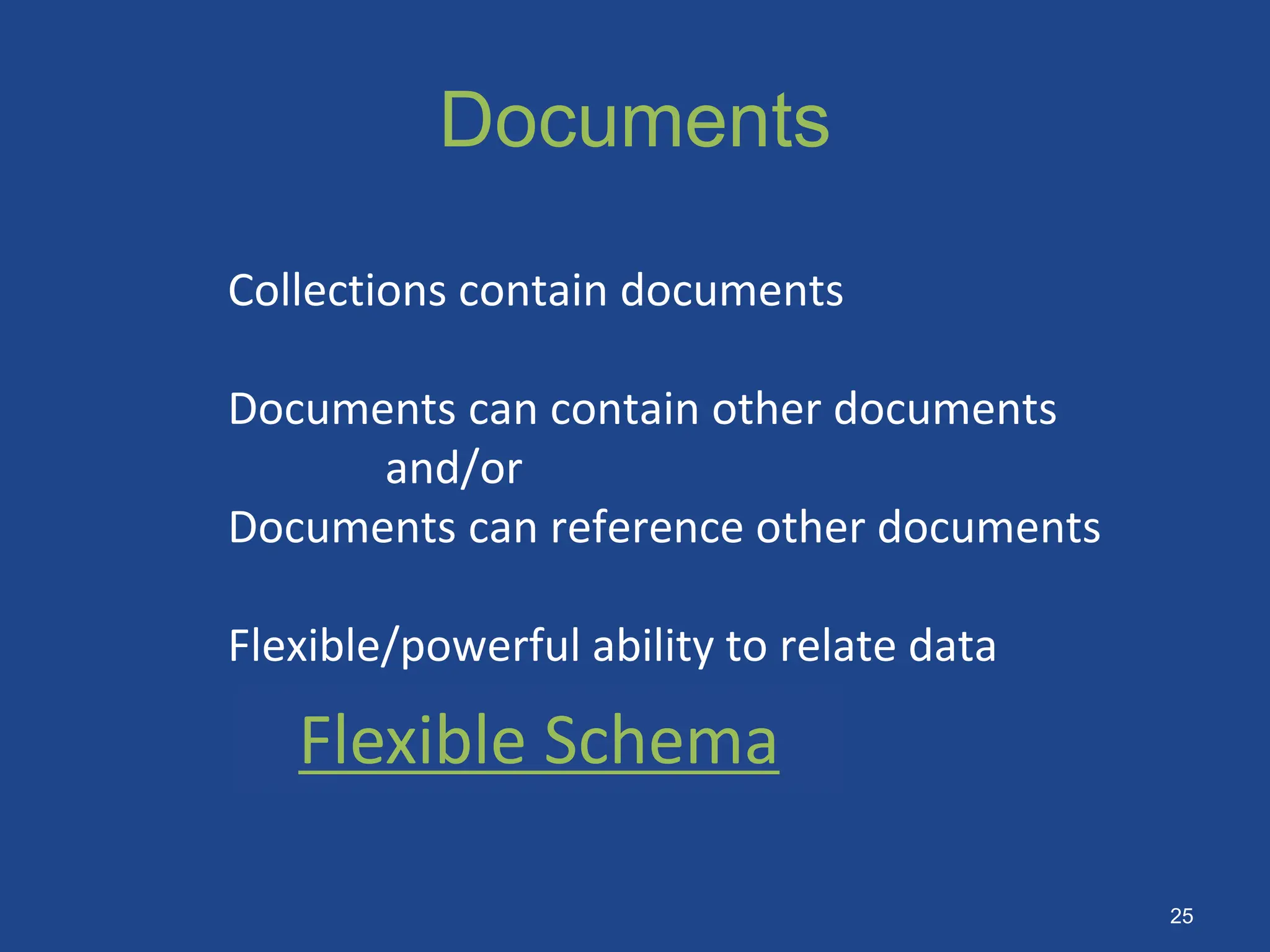
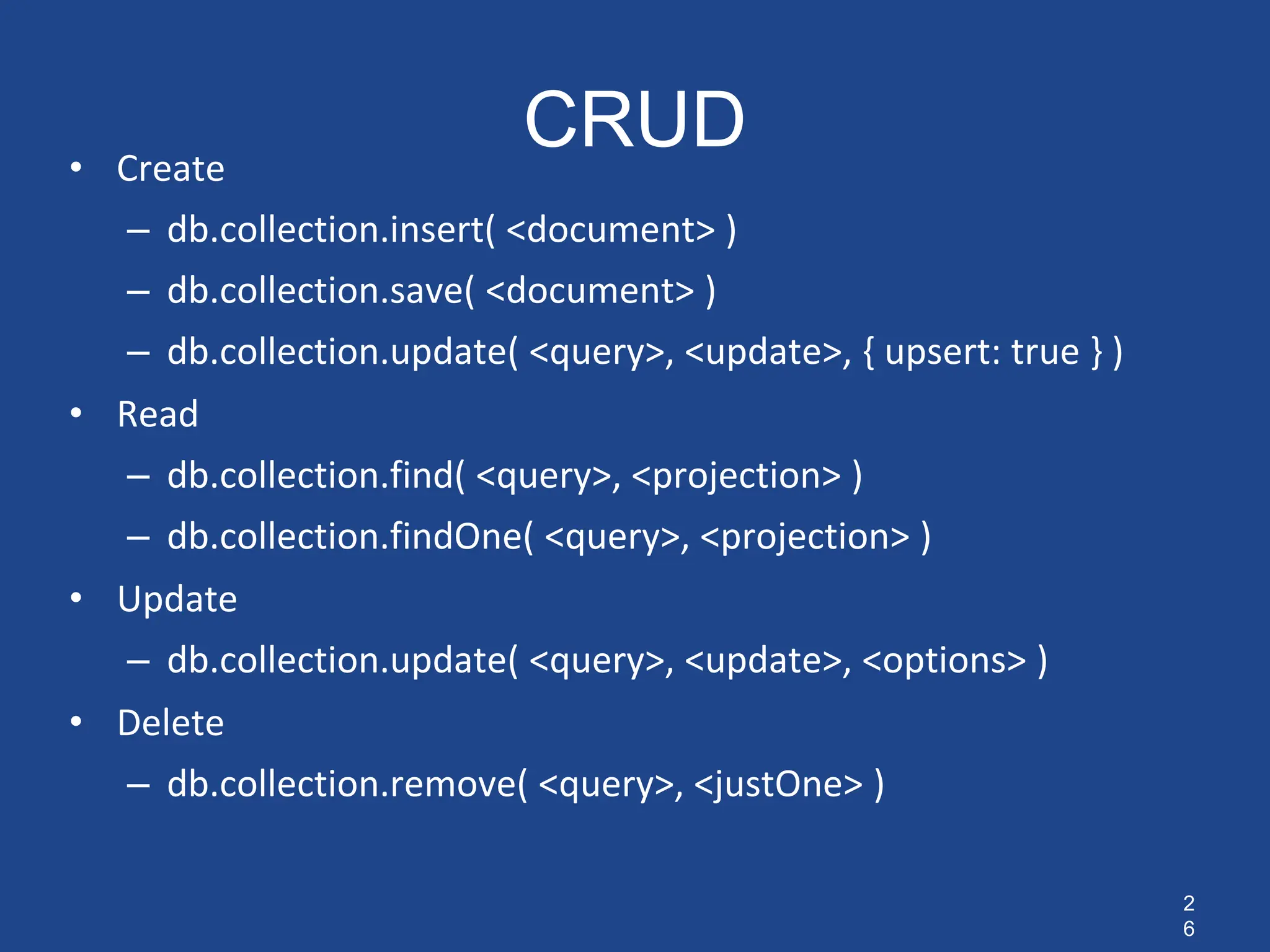
![Documents
var p = { author: “roger”,
date: new Date(),
title: “Spirited Away”,
avgRating: 9.834,
tags: [“Tezuka”, “Manga”]}
> db.posts.save(p)
27](https://image.slidesharecdn.com/mongodb-231004154158-137f2d00/75/MongoDB-pdf-27-2048.jpg)
![Linked vs Embedded Documents
{ _id :
ObjectId("4c4ba5c0672c685e5e8aabf3"),
author : "roger",
date : "Sat Jul 24 2010 …”,
text : "Spirited Away",
tags : [ "Tezuka", "Manga" ],
comments : [
{
author : "Fred",
date : "Sat Jul 26 2010…”,
text : "Best Movie Ever"
}
],
avgRating: 9.834 }
{ _id : ObjectId("4c4ba5c0672c685e5e8aabf3"),
author : "roger",
date : "Sat Jul 24 2010 19:47:11 GMT-0700 (PDT
text : "Spirited Away",
tags : [ "Tezuka", "Manga" ],
comments : [ 6, 274, 1135, 1298, 2245, 5623],
avg_rating: 9.834 }
comments { _id : 274,
movie_id : ObjectId(“4c4ba5c0672c6
author : "Fred",
date : "Sat Jul 24 2010 20:51:0
text : "Best Movie Ever”}
{ _id : 275,
movie_id : ObjectId(“3d5ffc88
author : "Fred",
28](https://image.slidesharecdn.com/mongodb-231004154158-137f2d00/75/MongoDB-pdf-28-2048.jpg)
![Querying
>db.posts.find()
{ _id : ObjectId("4c4ba5c0672c685e5e8aabf3"),
author : "roger",
date : "Sat Jul 24 2010 19:47:11 GMT-0700 (PDT)",
text : "Spirited Away",
tags : [ "Tezuka", "Manga" ] }
Note:
- _id is unique, but can be anything you’d like
29](https://image.slidesharecdn.com/mongodb-231004154158-137f2d00/75/MongoDB-pdf-29-2048.jpg)
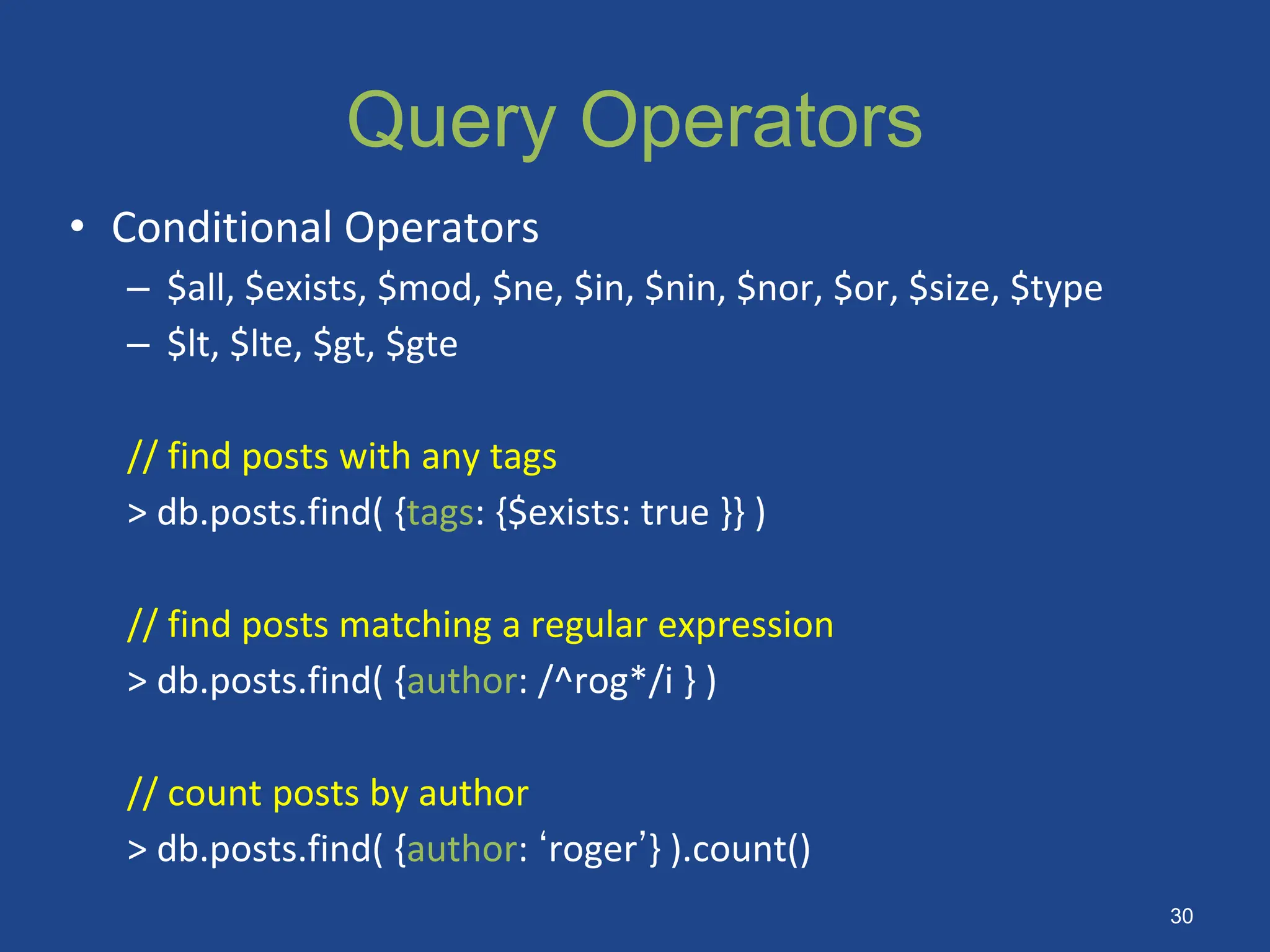
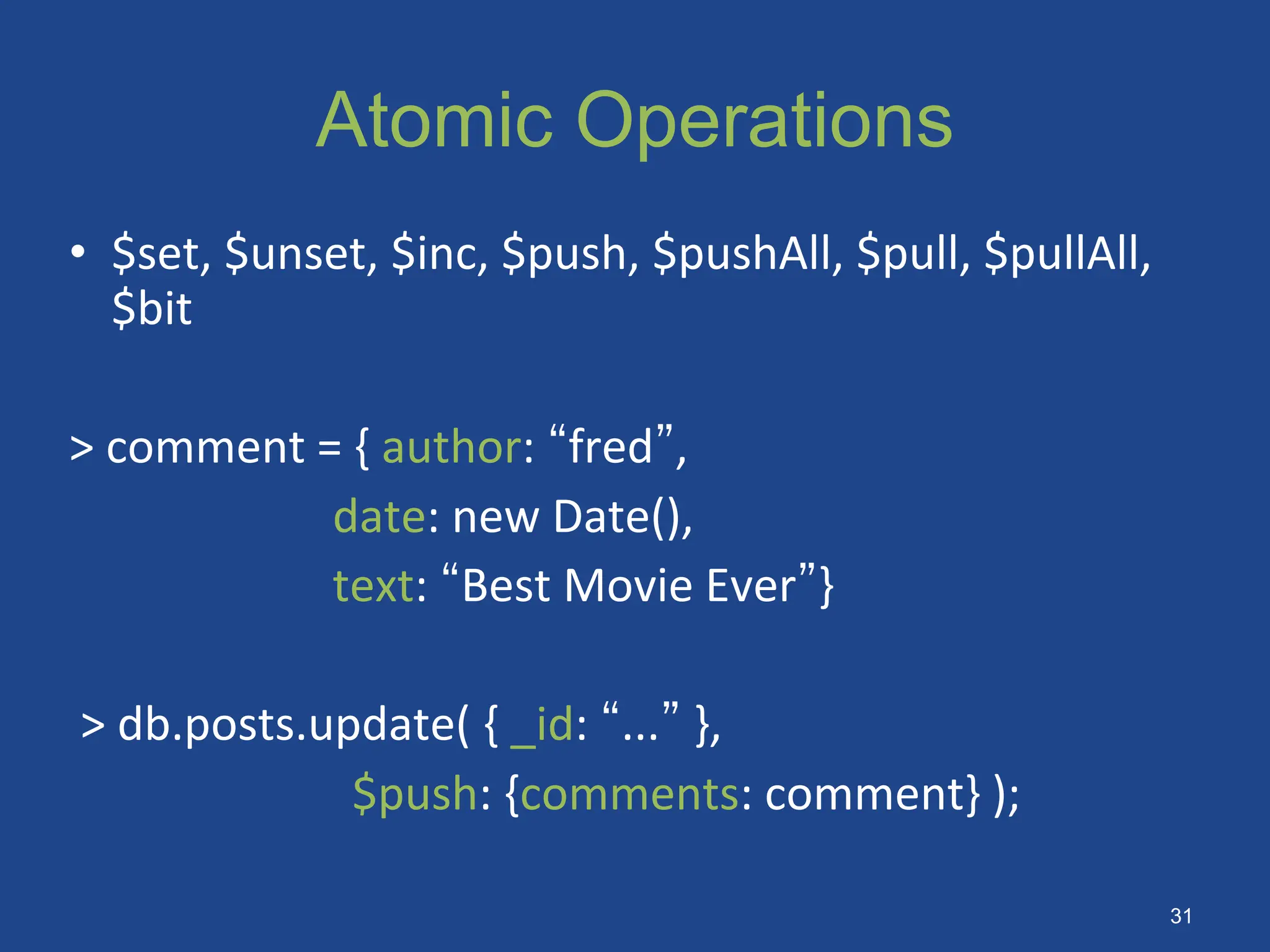
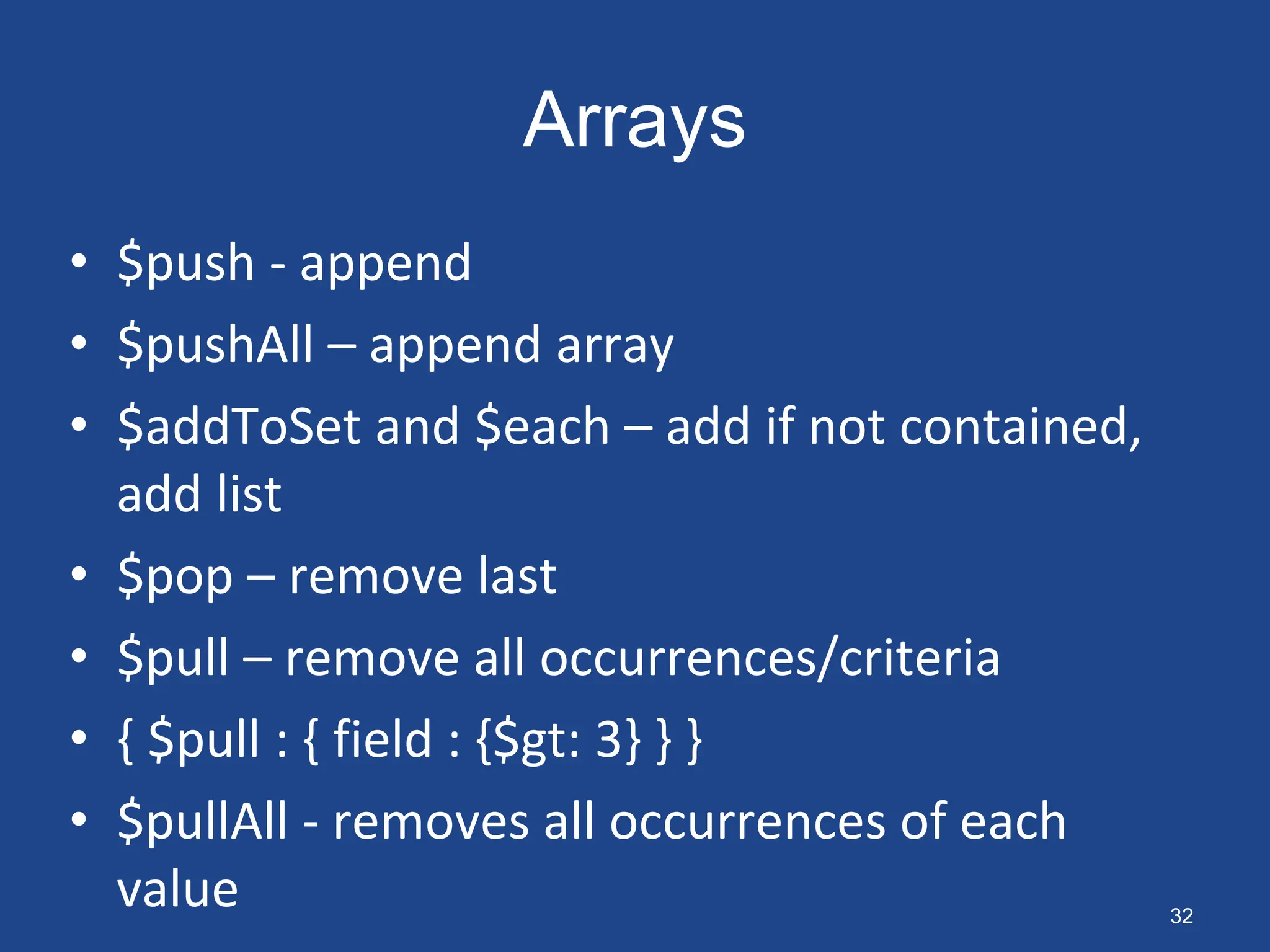
![Indexes
// Index nested documents
> db.posts.ensureIndex( “comments.author”:1 )
> db.posts.find({‘comments.author’:’Fred’})
// Index on tags (array values)
> db.posts.ensureIndex( tags: 1)
> db.posts.find( { tags: ’Manga’ } )
// geospatial index
> db.posts.ensureIndex({ “author.location”: “2d” )
> db.posts.find( “author.location” : { $near : [22,42] } )
Create index on any Field in Document
>db.posts.ensureIndex({author: 1})
33](https://image.slidesharecdn.com/mongodb-231004154158-137f2d00/75/MongoDB-pdf-33-2048.jpg)
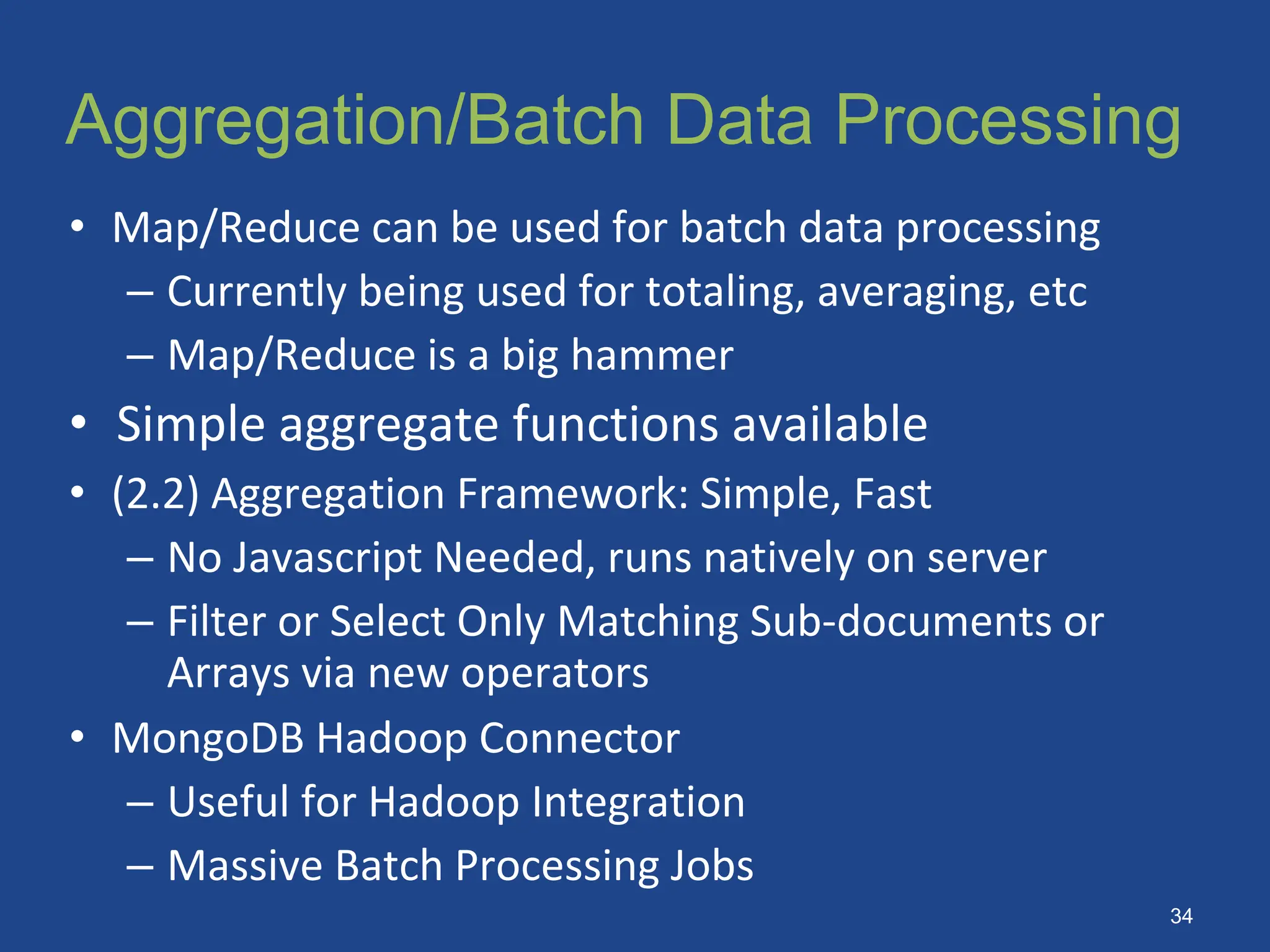

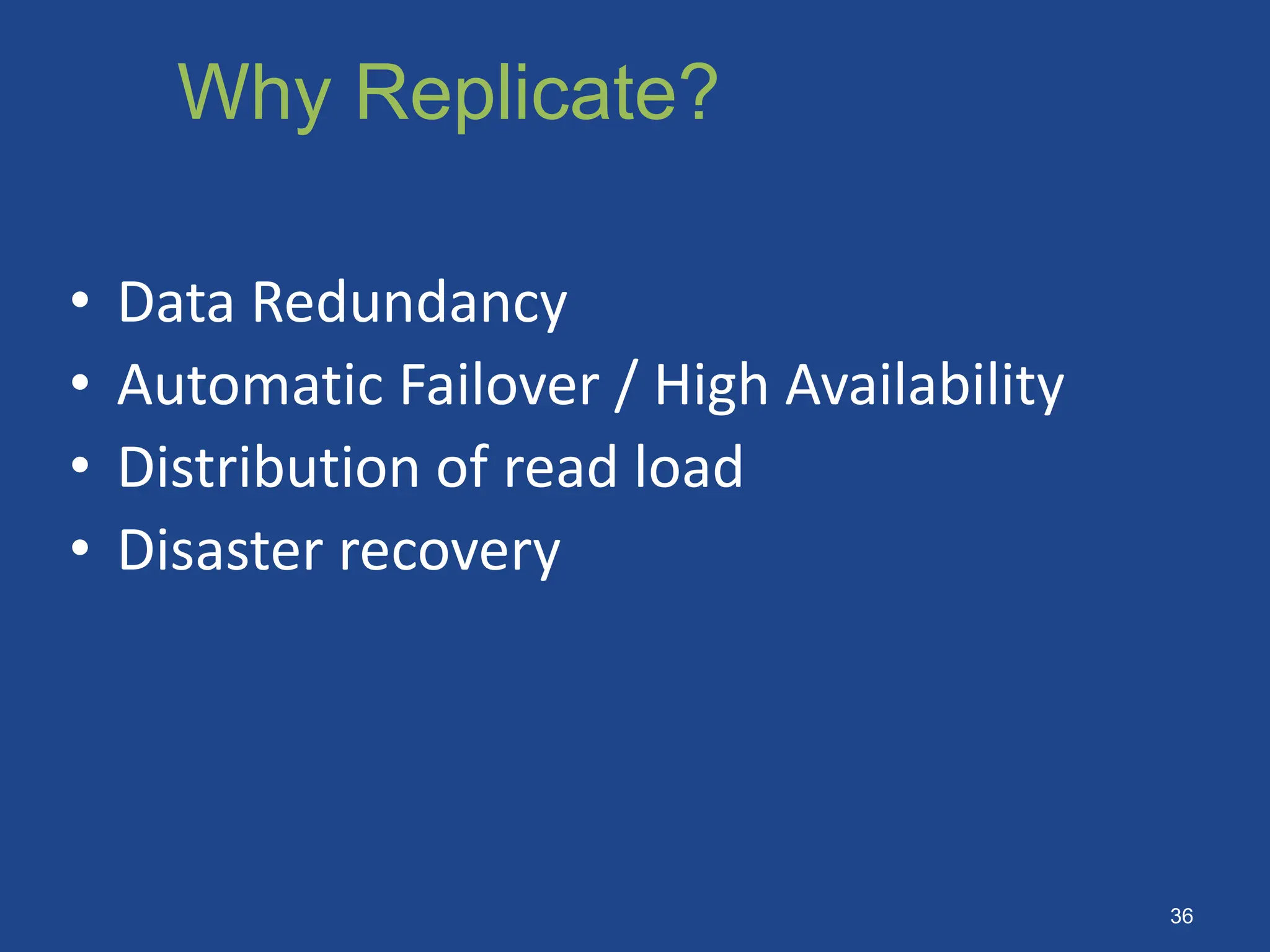


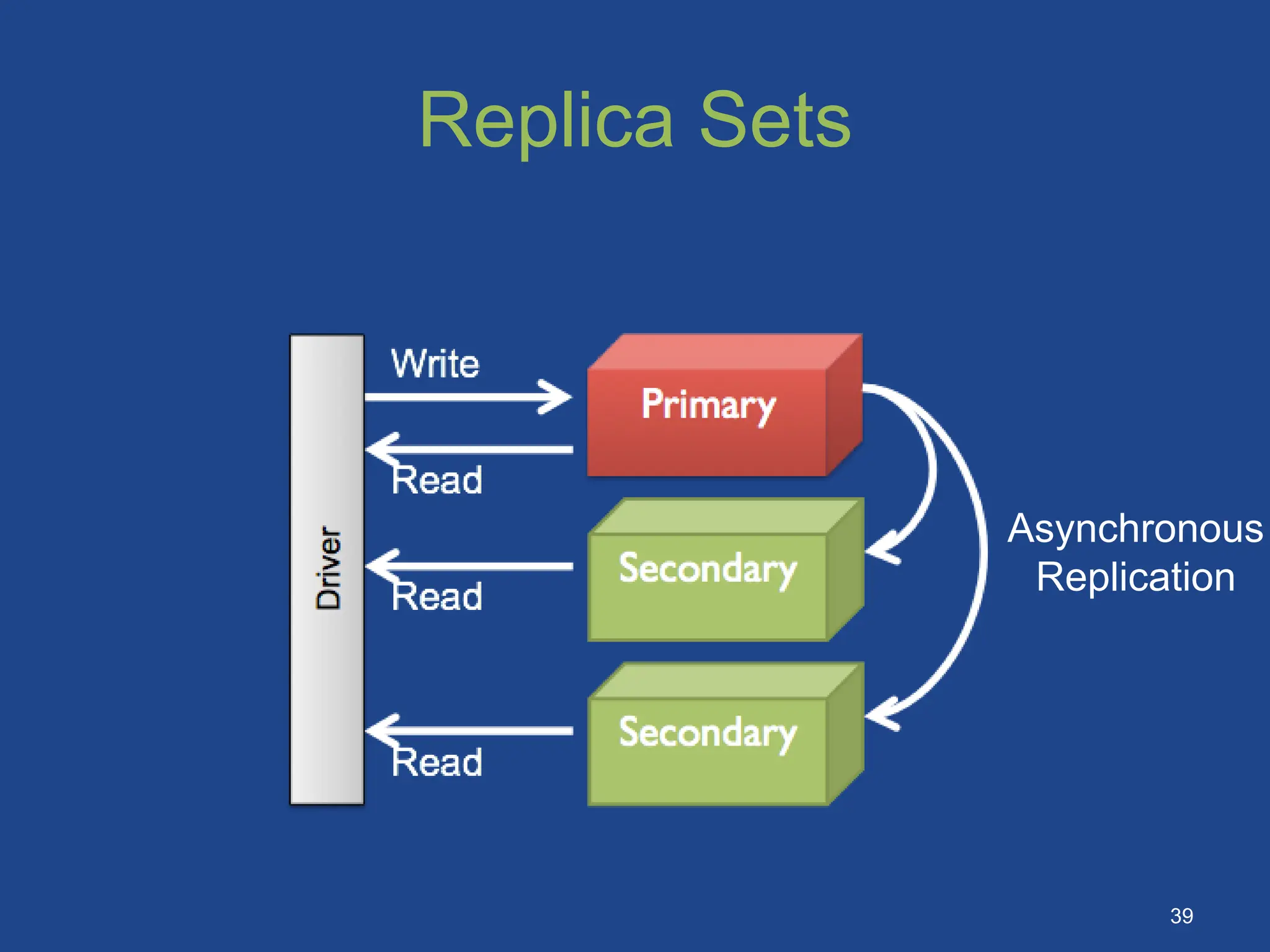
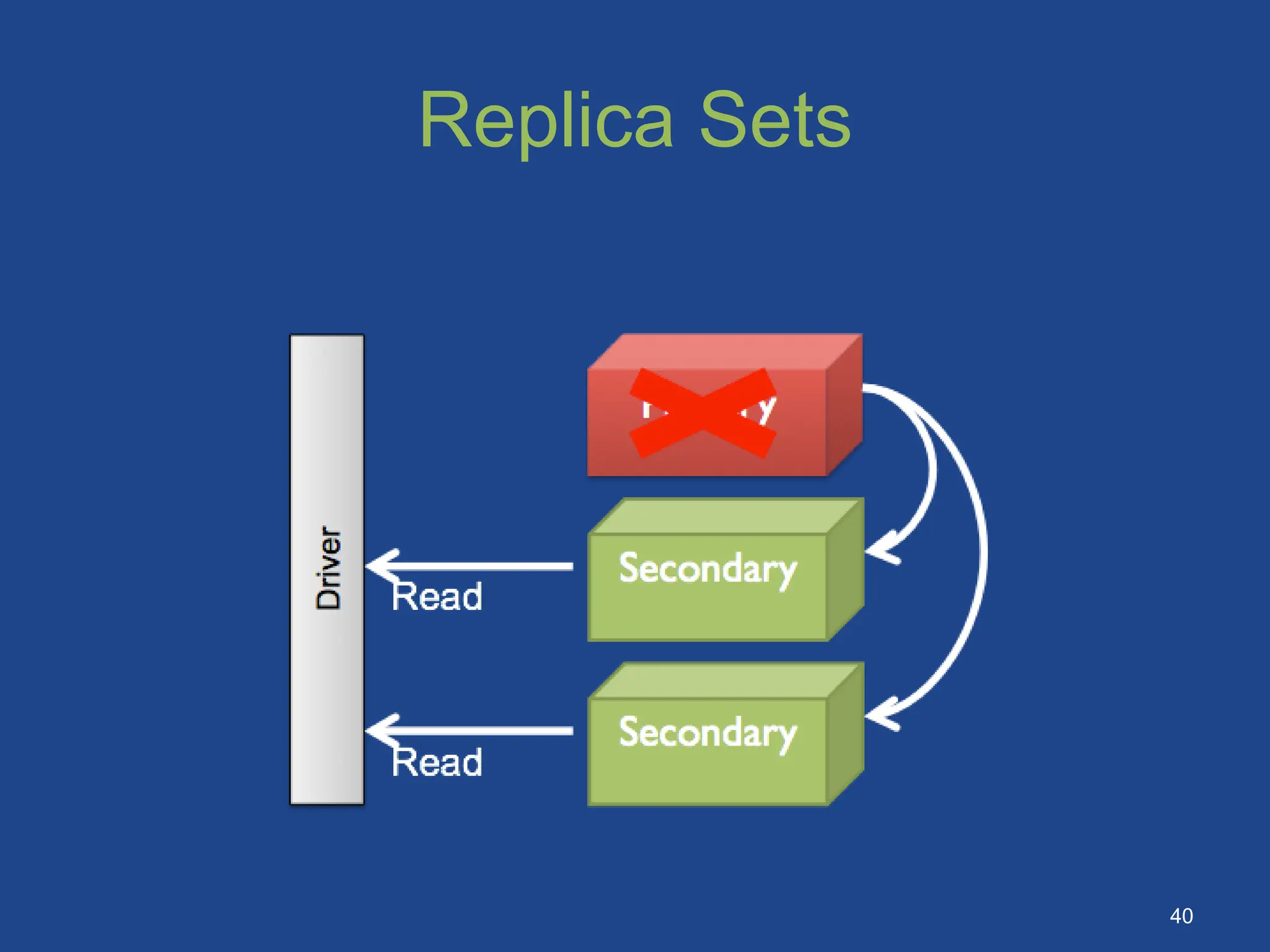
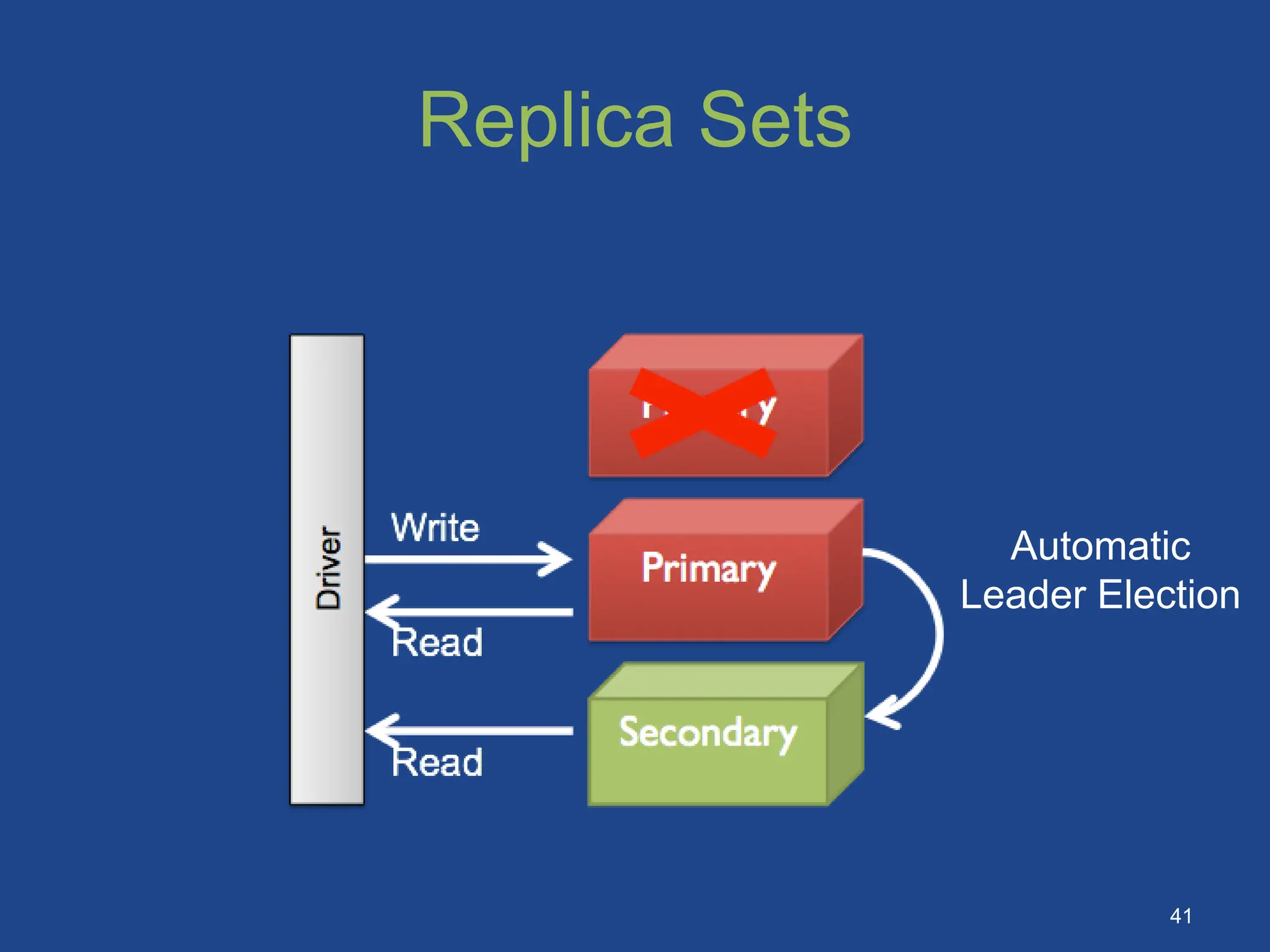
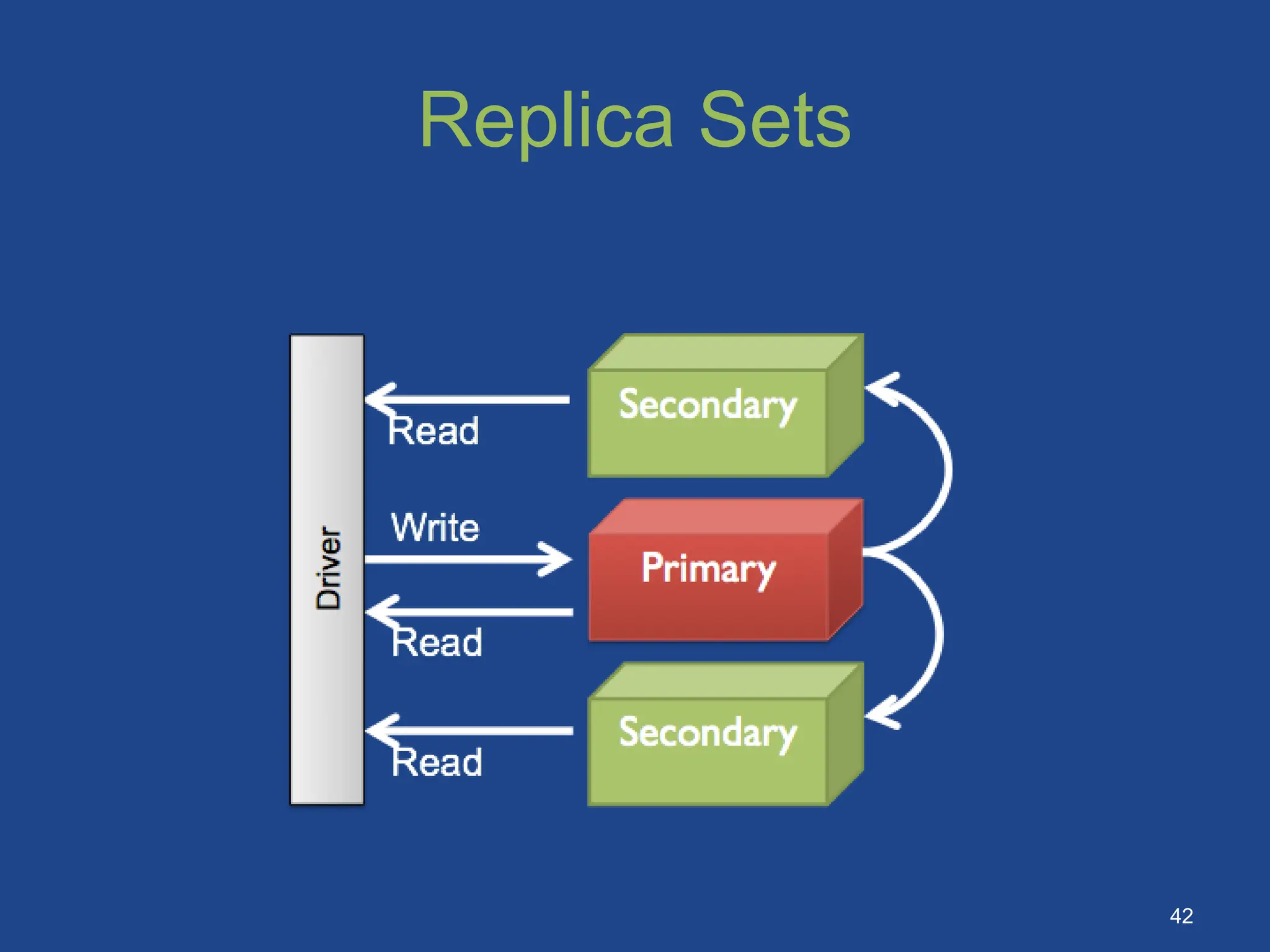
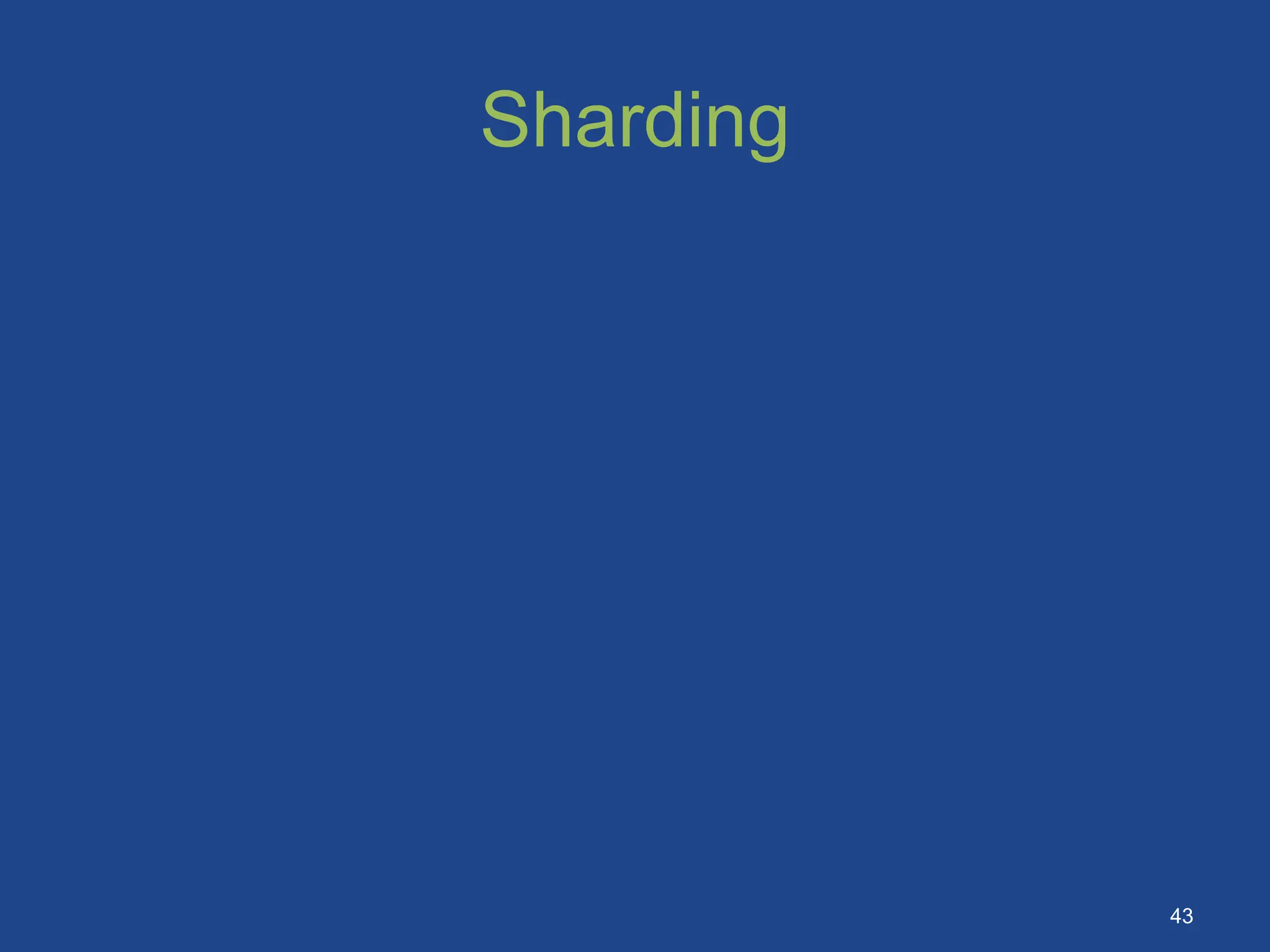
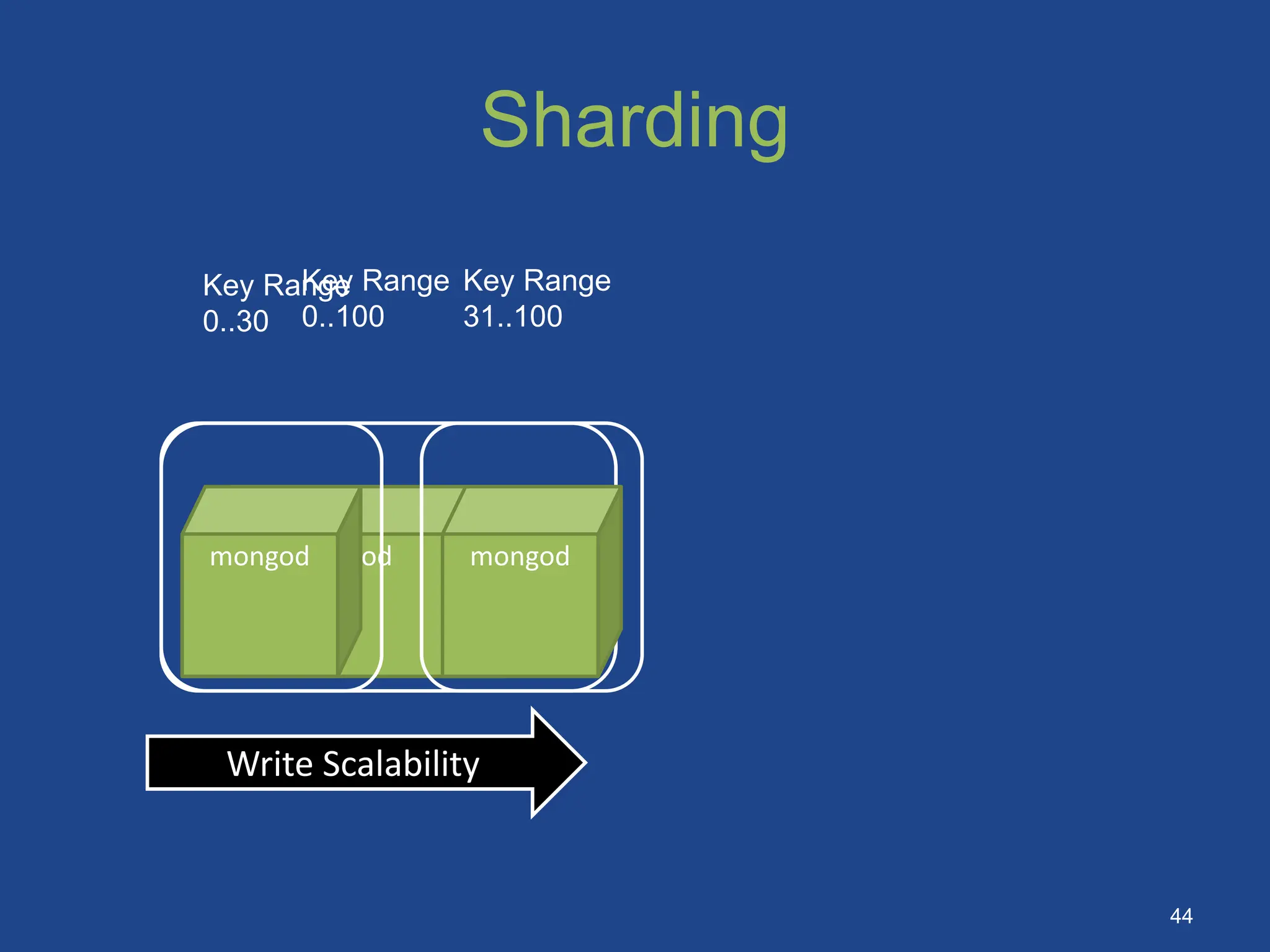
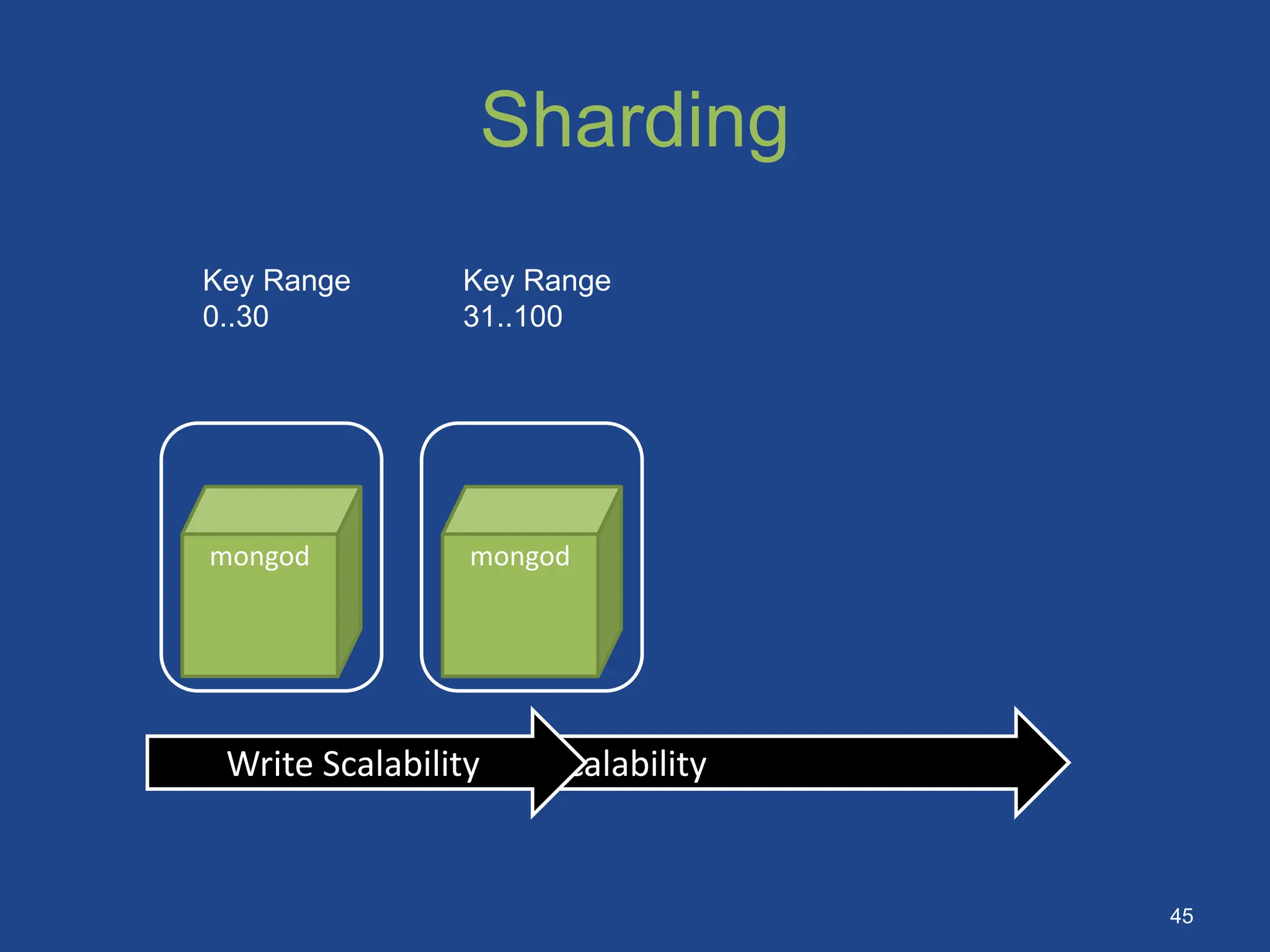
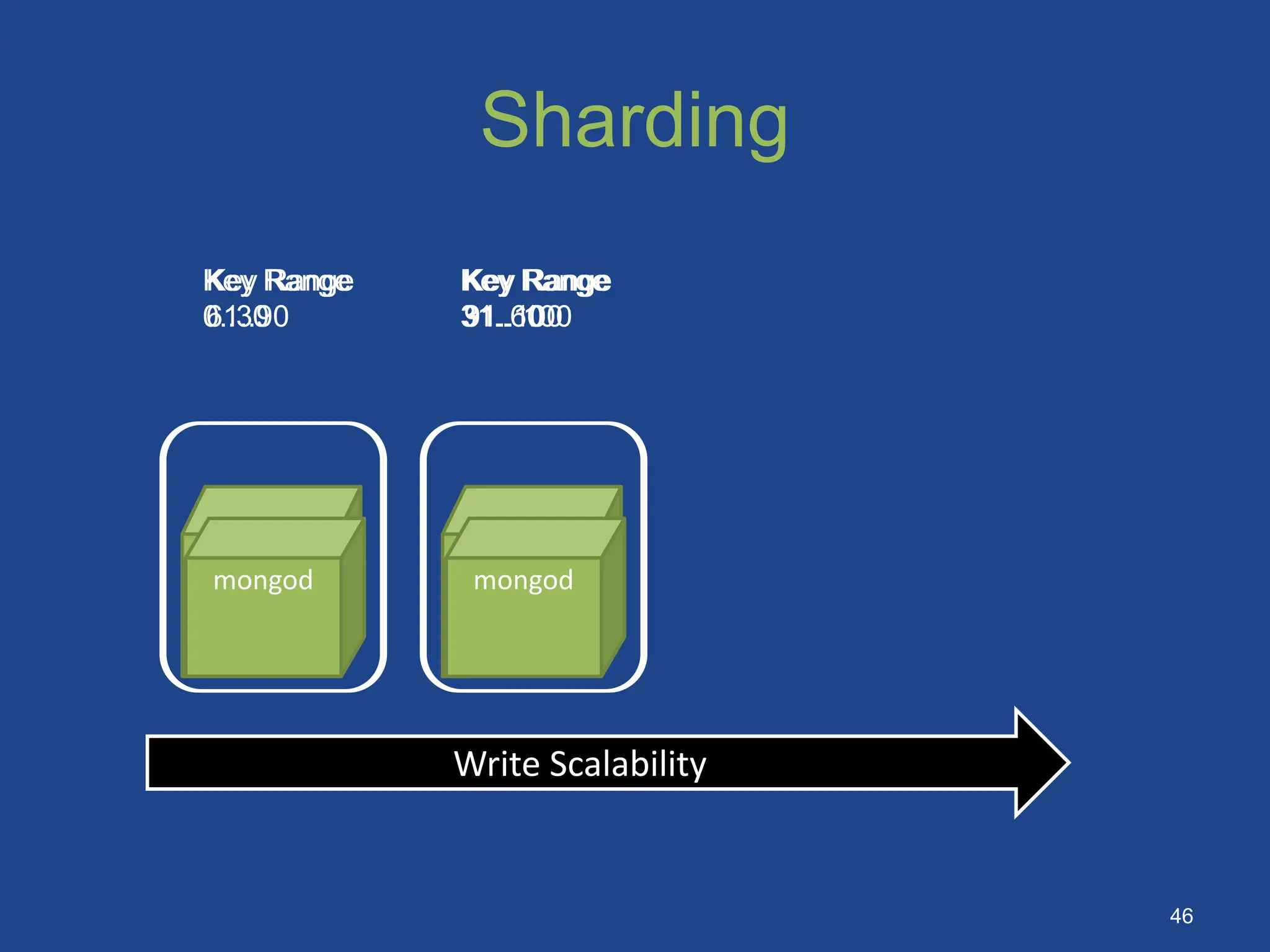
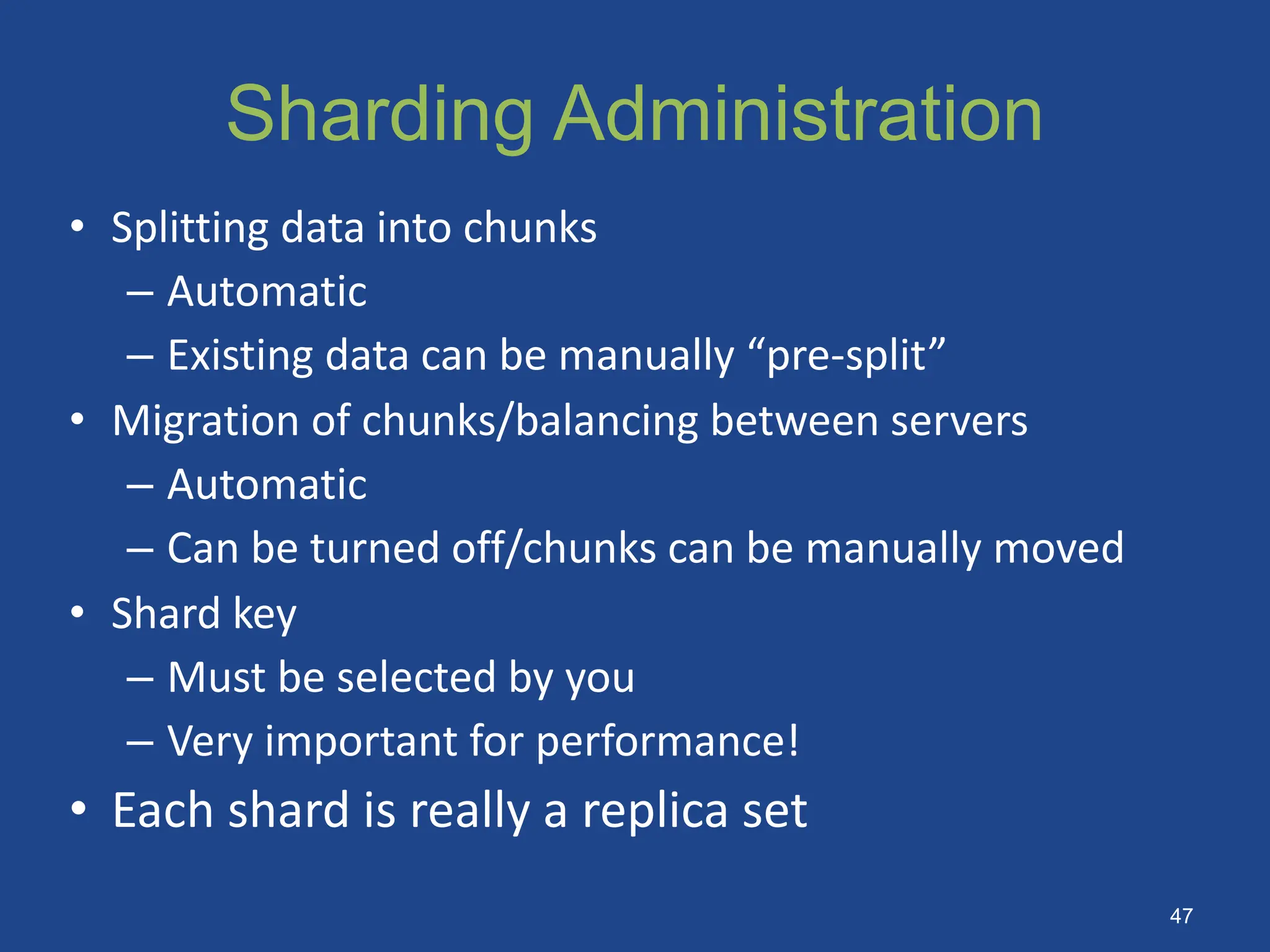

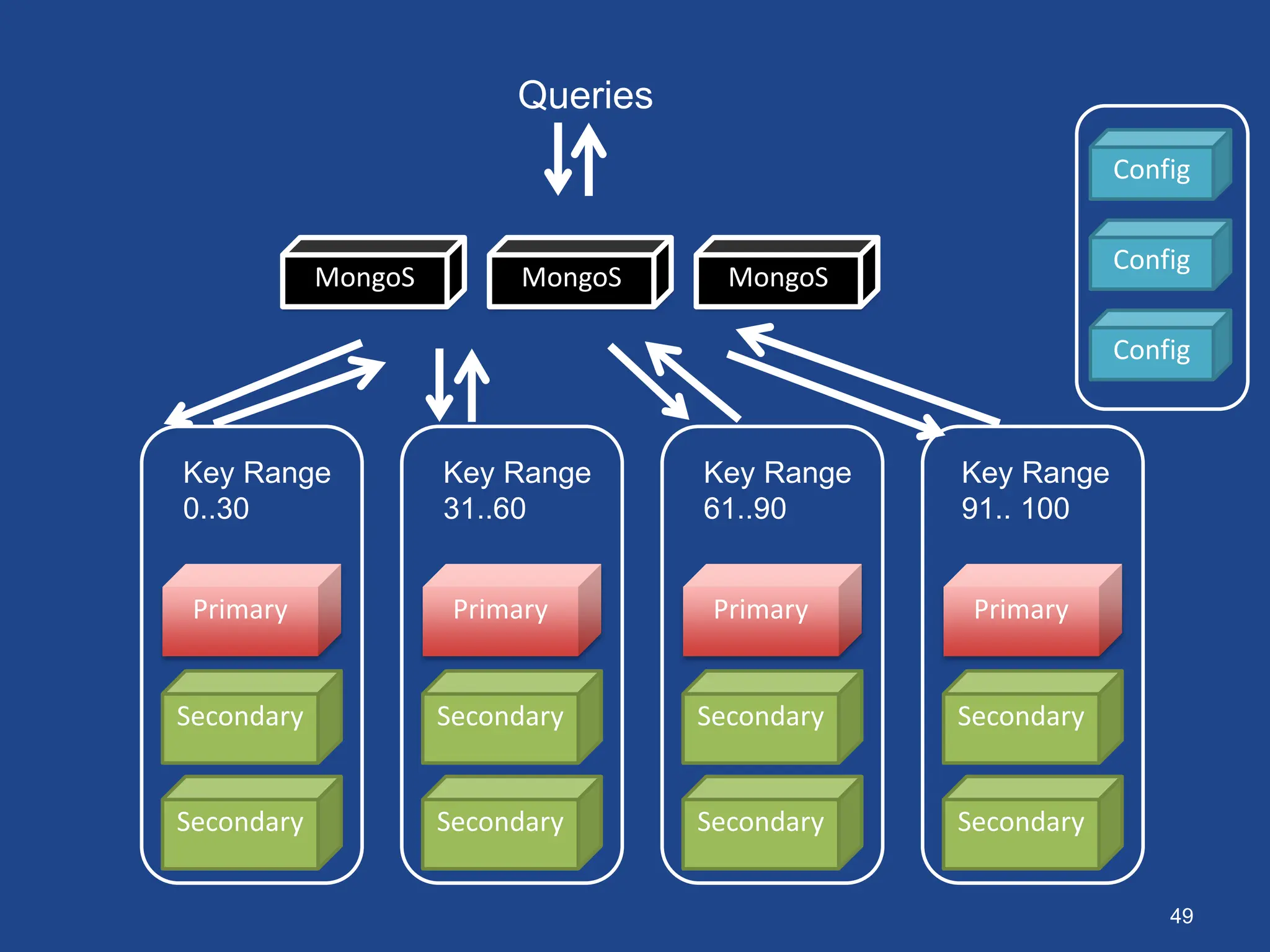



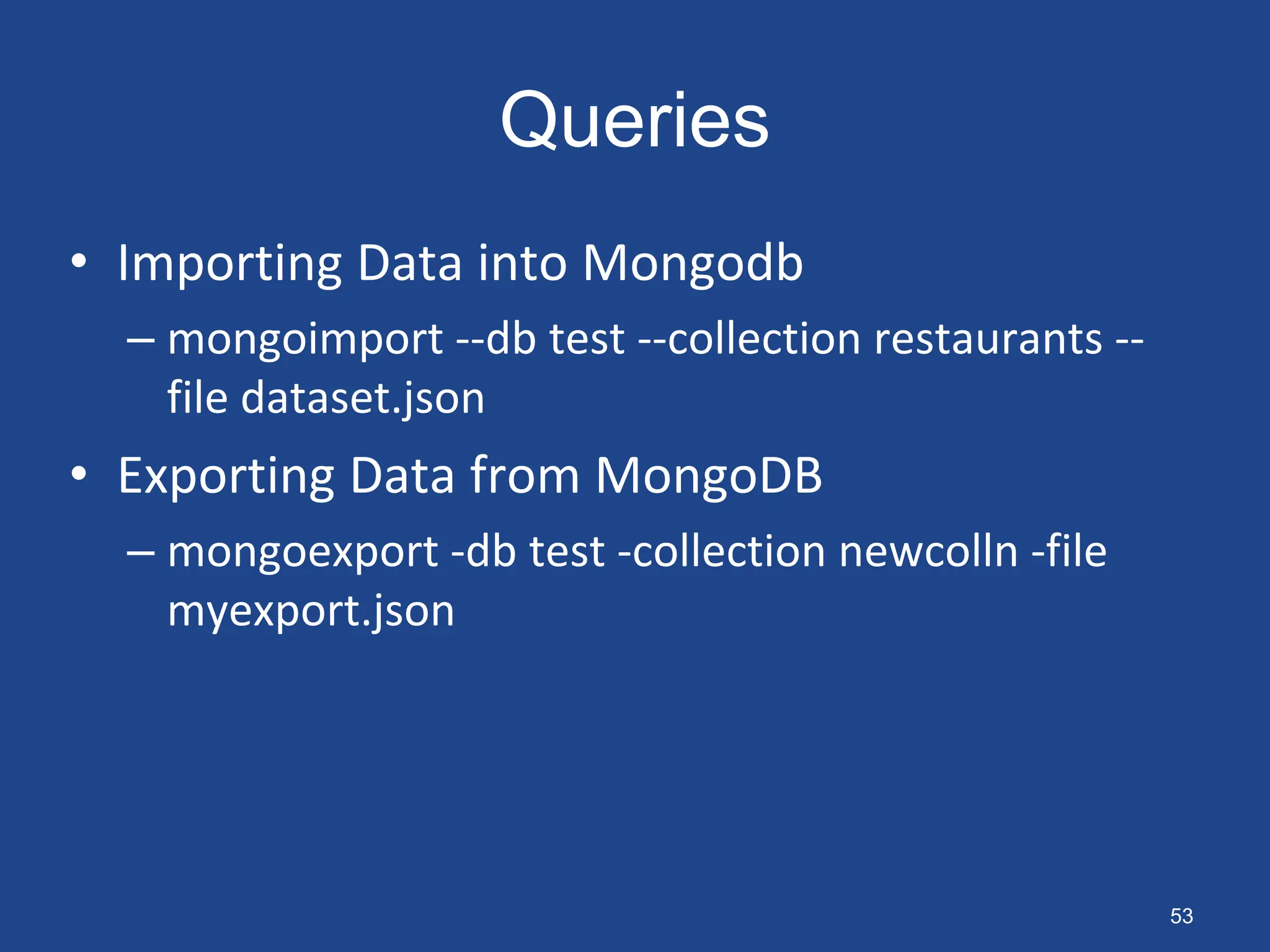
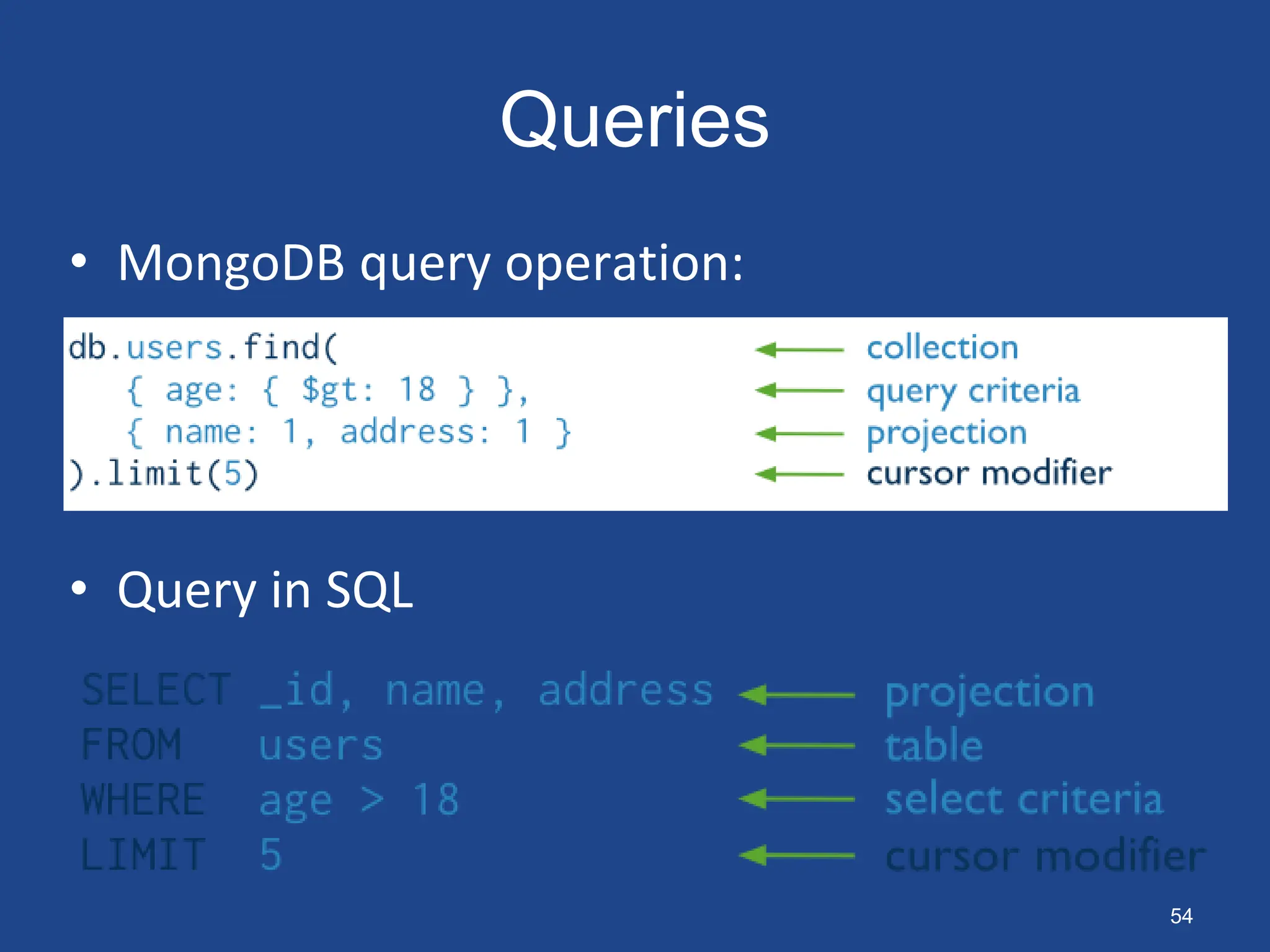
![Create/Insert Queries
• Db.collection.insert()
db.inventory.insert(
{ item: "ABC1",
details: { model: "14Q3", manufacturer: "XYZ
Company" },
stock: [ { size: "S", qty: 25 }, { size: "M", qty: 50 } ],
category: "clothing" } )
55](https://image.slidesharecdn.com/mongodb-231004154158-137f2d00/75/MongoDB-pdf-55-2048.jpg)
![Find Queries
• db.collection.find()
• db.inventory.find( {} )
• db.inventory.find( { type: "snacks" } )
• db.inventory.find( { type: { $in: [ 'food', 'snacks'
] } } )
• db.inventory.find( { type: 'food', price: { $lt:
9.95 } } )
• db.inventory.find( { $or: [ { qty: { $gt: 100 } }, {
price: { $lt: 9.95 } } ] } )
56](https://image.slidesharecdn.com/mongodb-231004154158-137f2d00/75/MongoDB-pdf-56-2048.jpg)
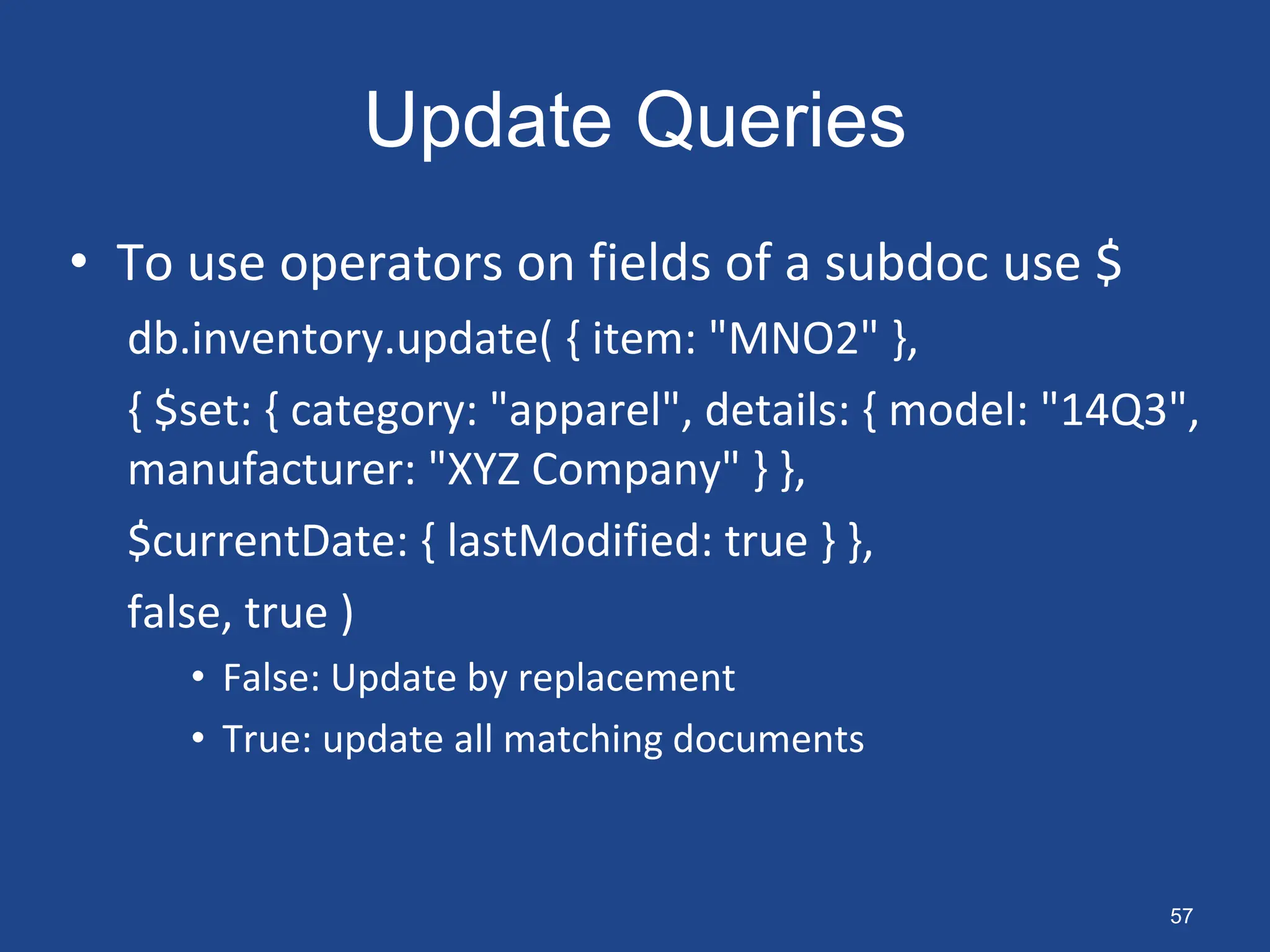
![Queries
• Aggregation
– SQL Query
– SELECT state, SUM(pop) AS totalPop FROM
zipcodes GROUP BY state HAVING totalPop >=
(10*1000*1000)
– MongoDB
– db.zipcodes.aggregate( [ { $group: { _id: "$state",
totalPop: { $sum: "$pop" } } }, { $match: { totalPop:
{ $gte: 10*1000*1000 } } } ] )
58](https://image.slidesharecdn.com/mongodb-231004154158-137f2d00/75/MongoDB-pdf-58-2048.jpg)
![Indexes
• db.collection.find({field:’value’}).explain()
• db.collection. ensureIndex({title: 1 });
• db.collection.dropIndex("index_name");
• db.mycoll.ensureIndex({'address.coord': ‘2d’})
• db.mycoll.find({"address.coord": { $near: [70,
40], $minDistance: 0.05 }})
59](https://image.slidesharecdn.com/mongodb-231004154158-137f2d00/75/MongoDB-pdf-59-2048.jpg)
